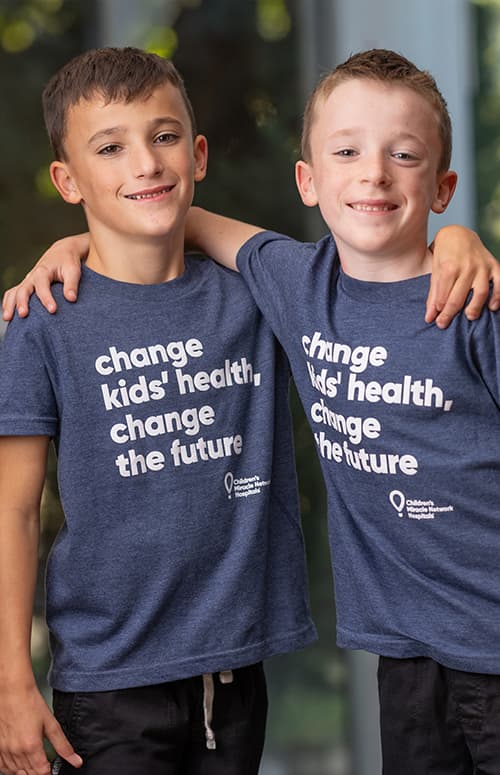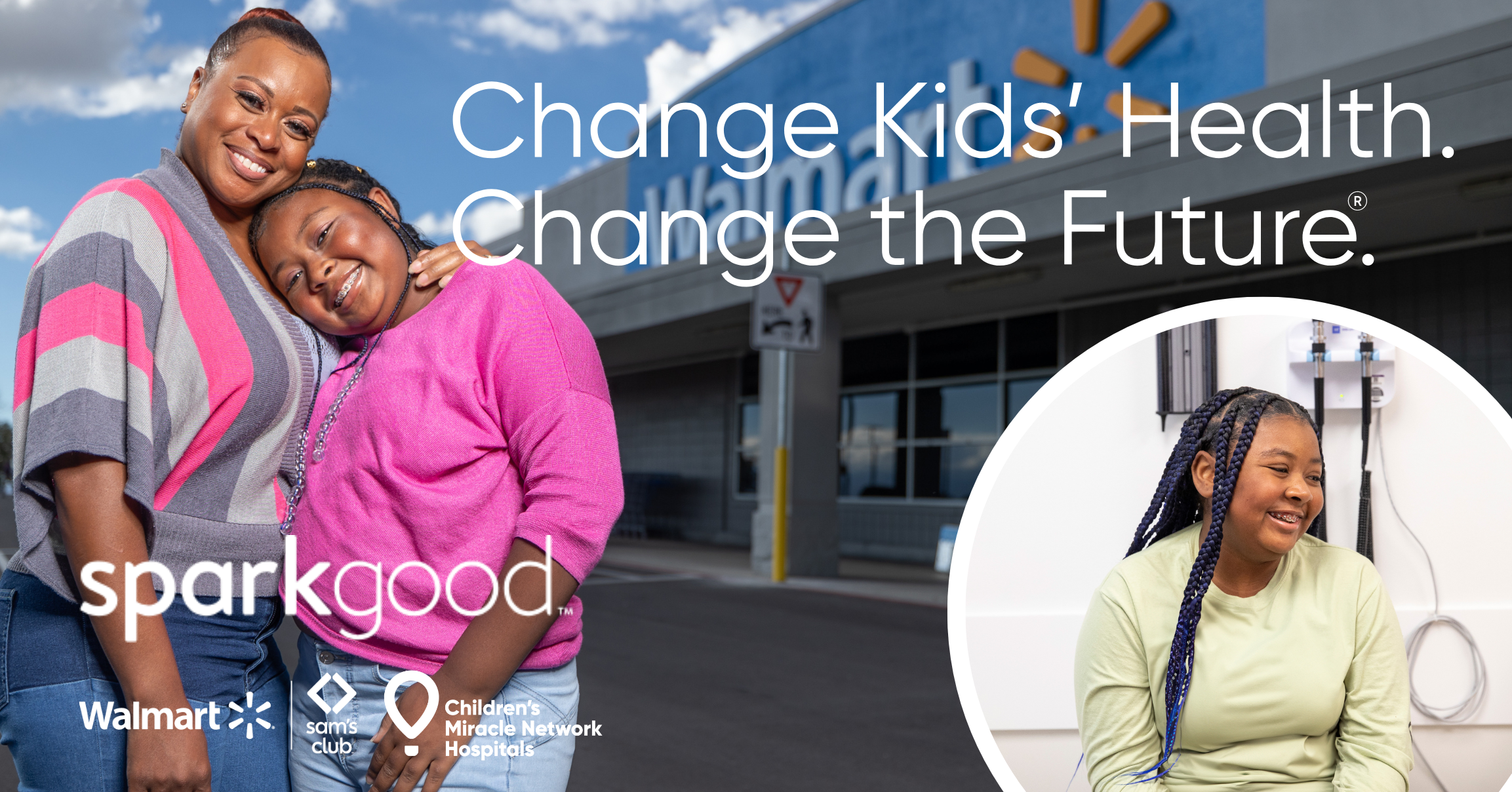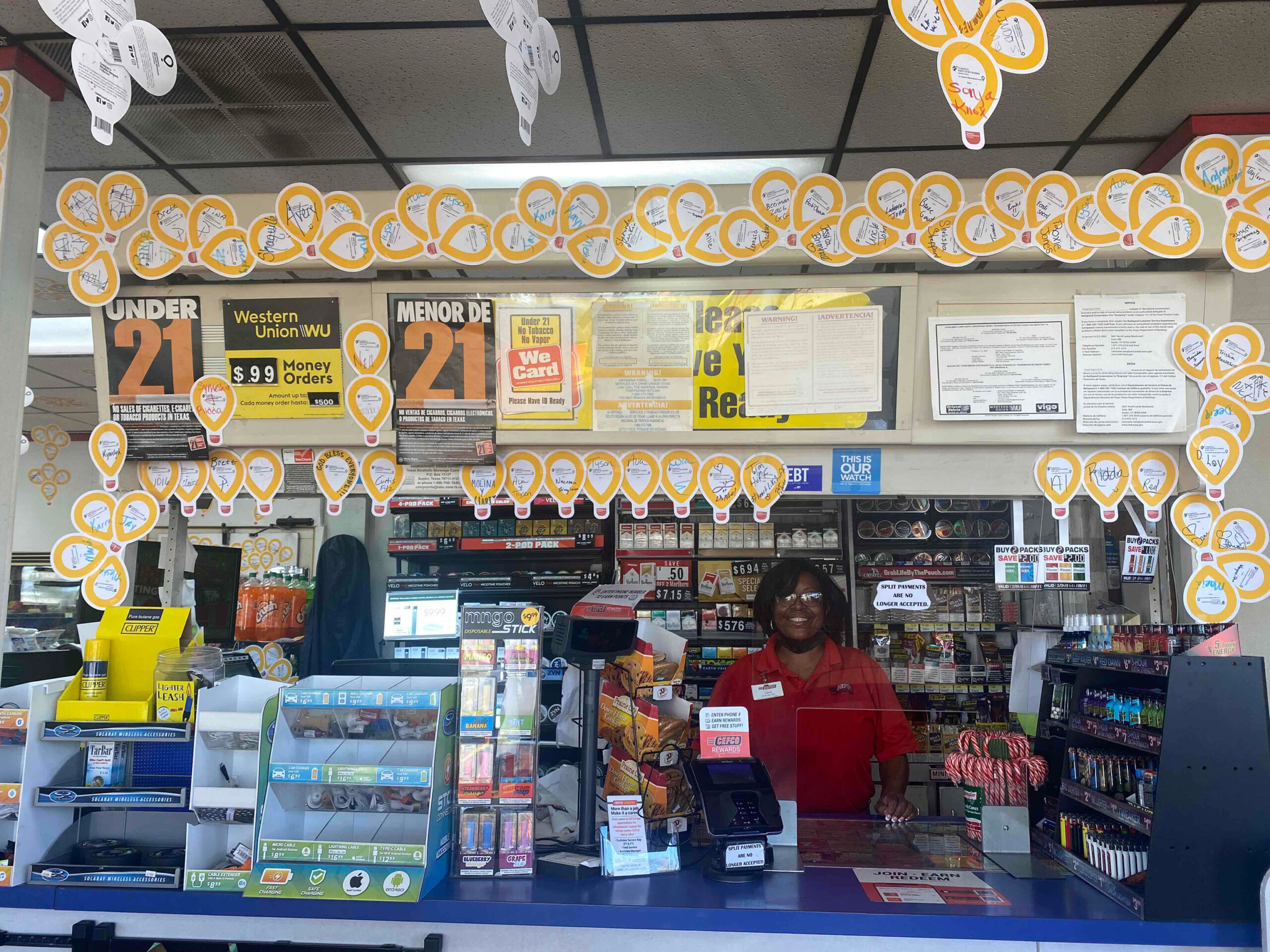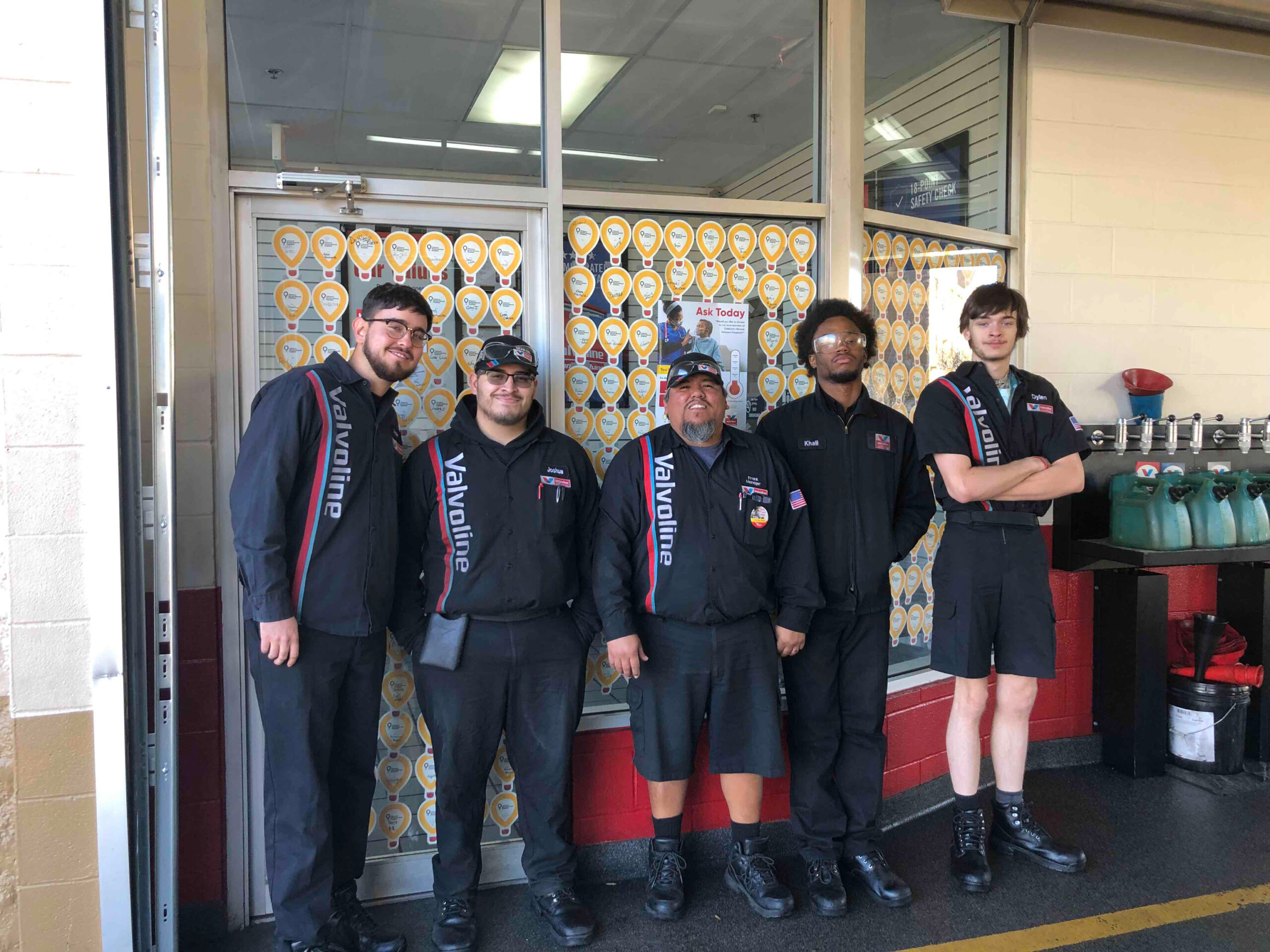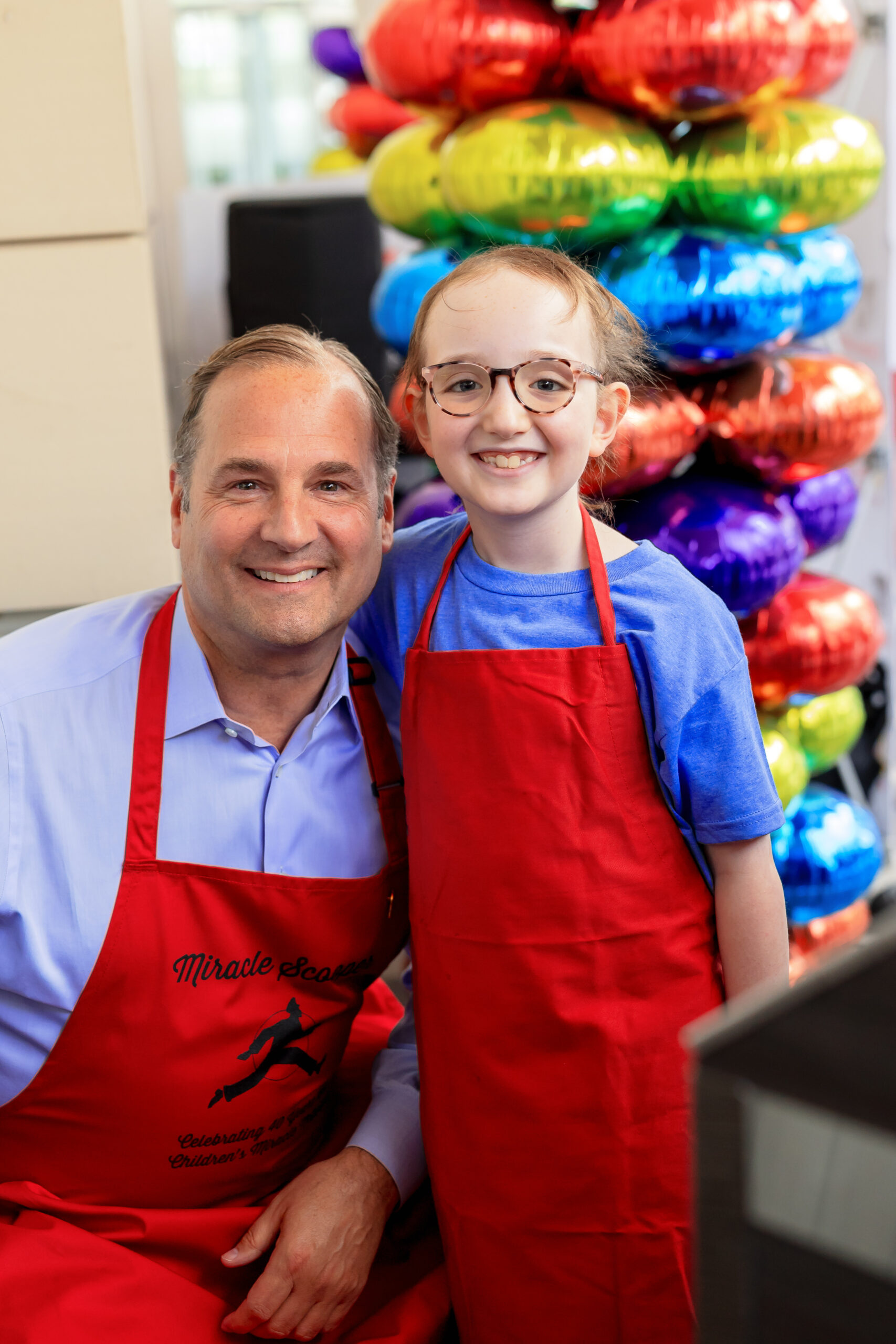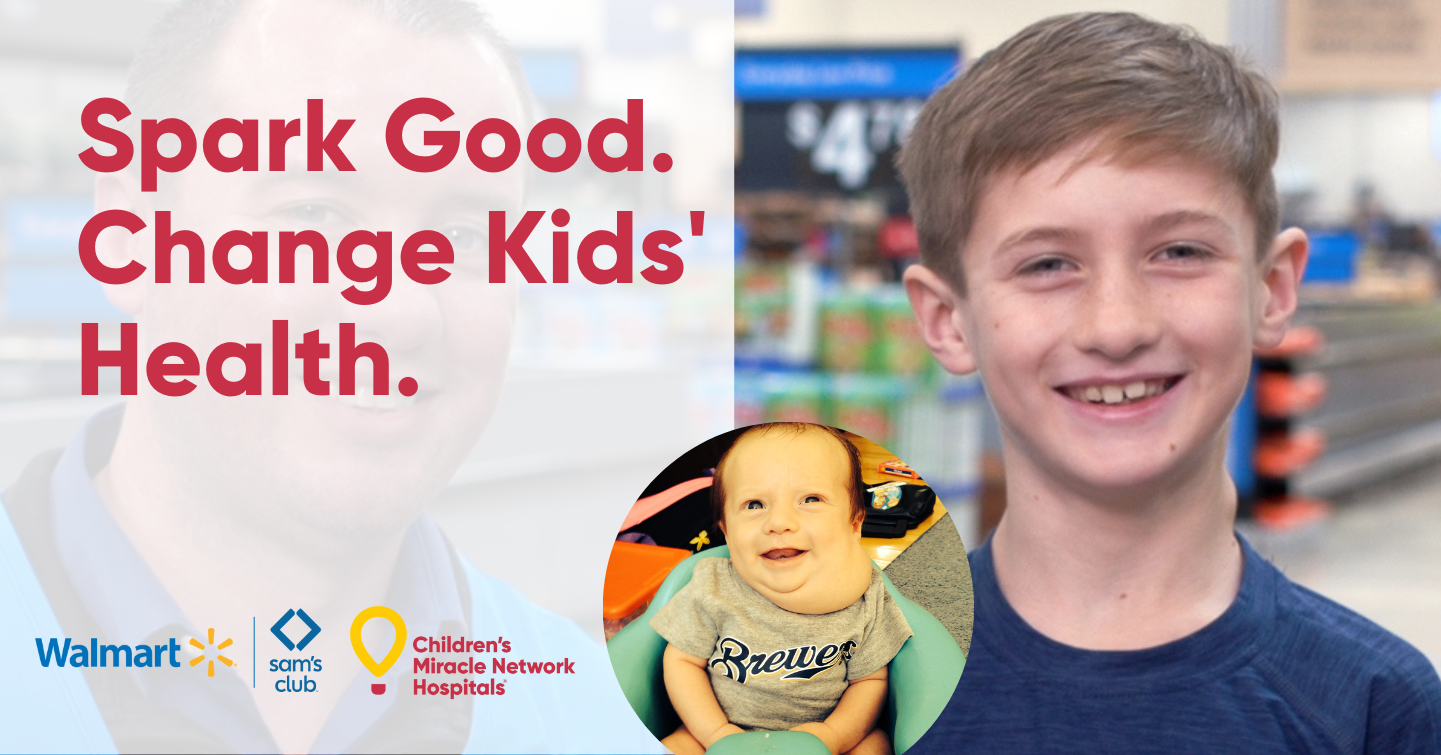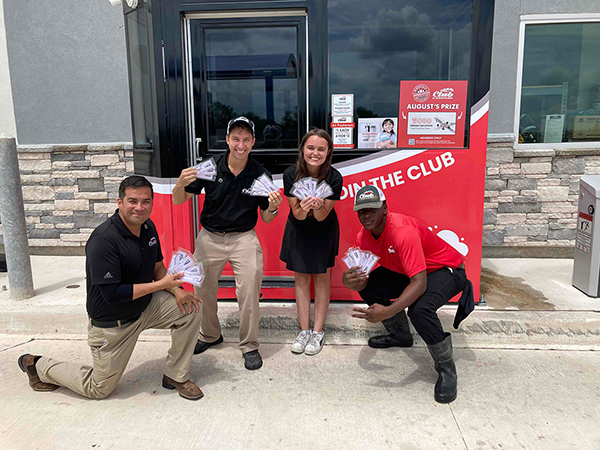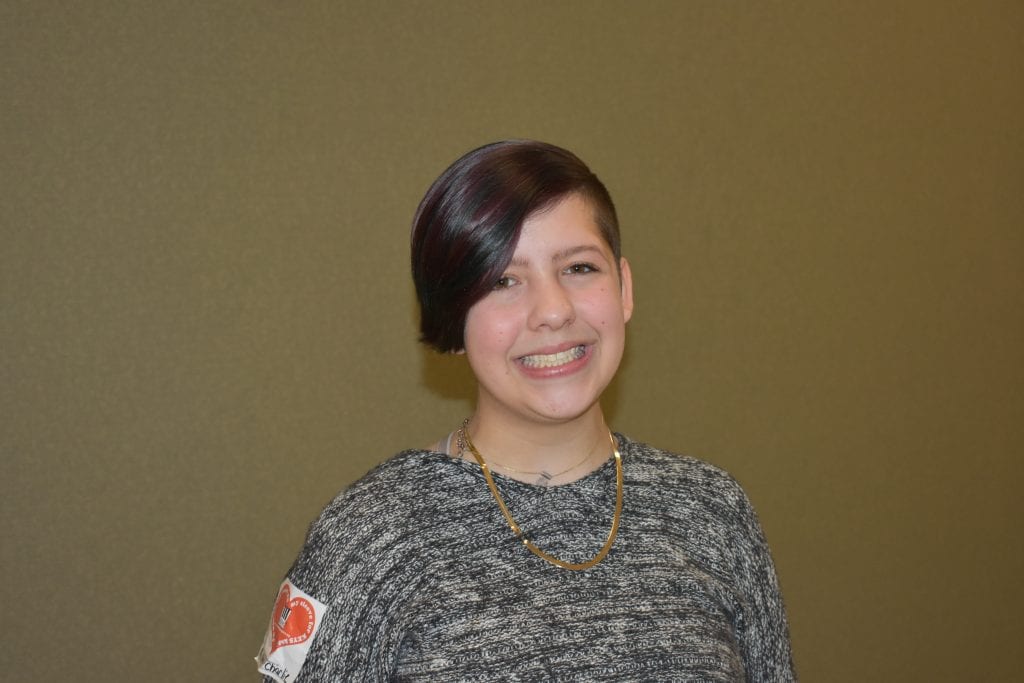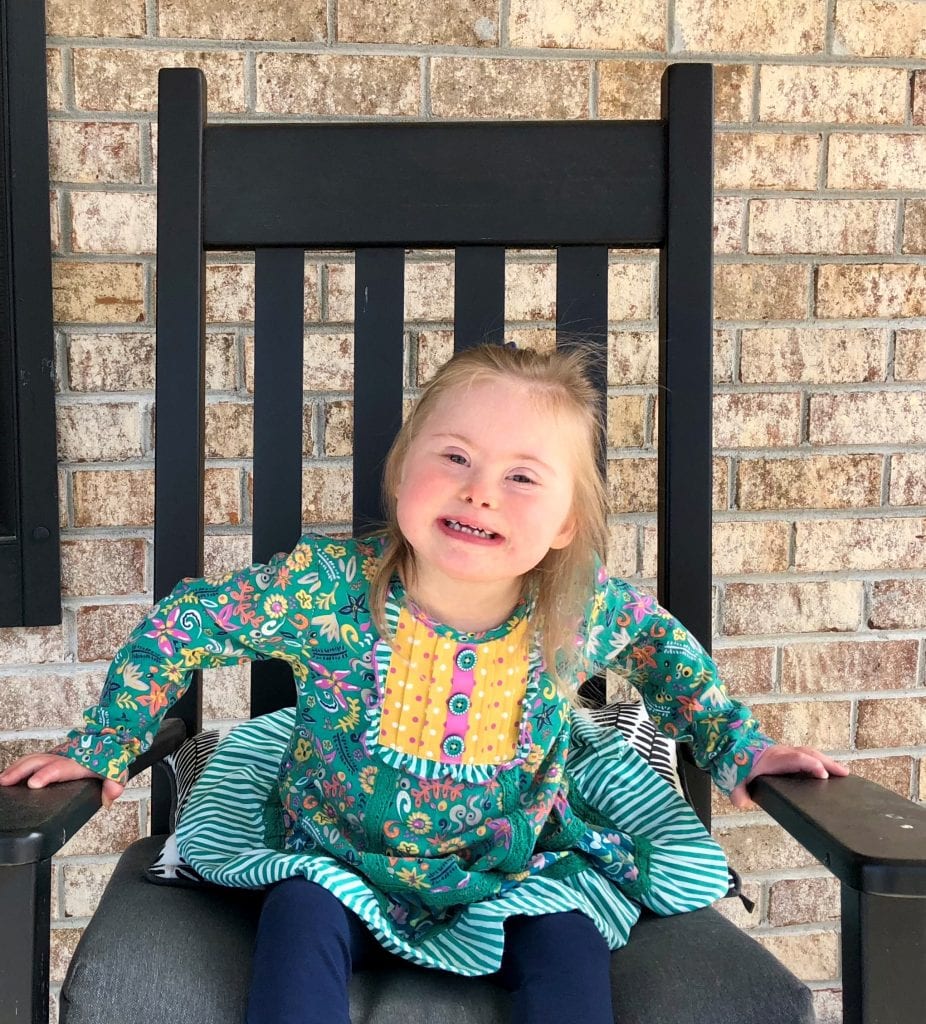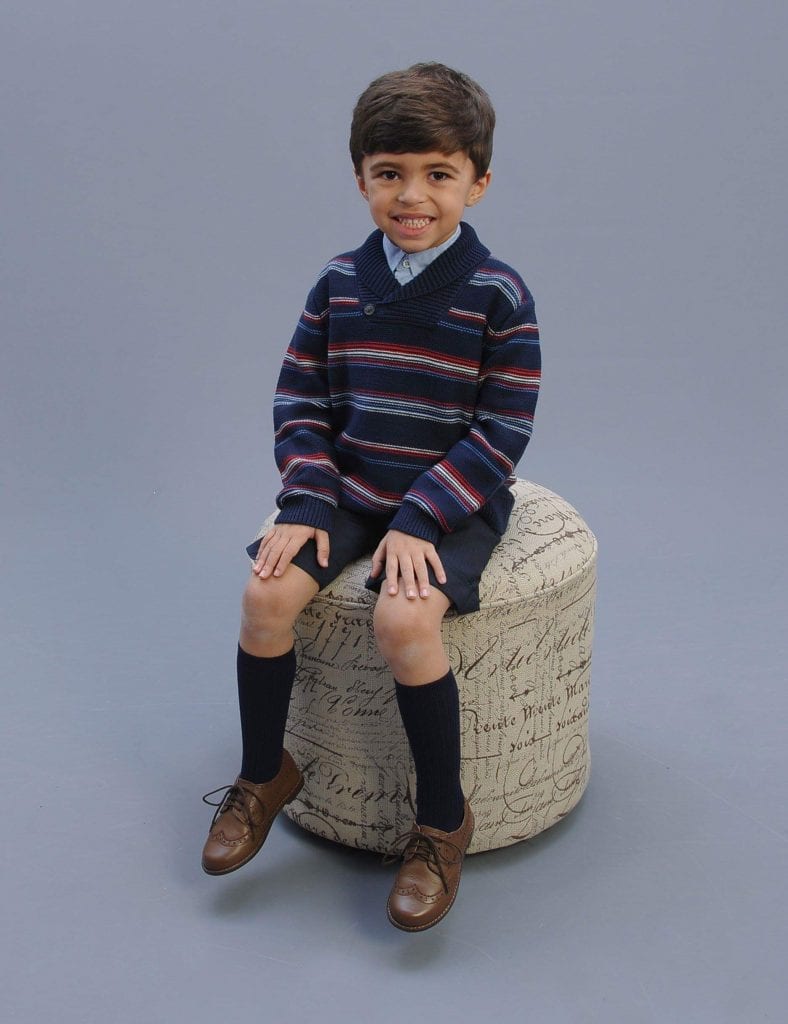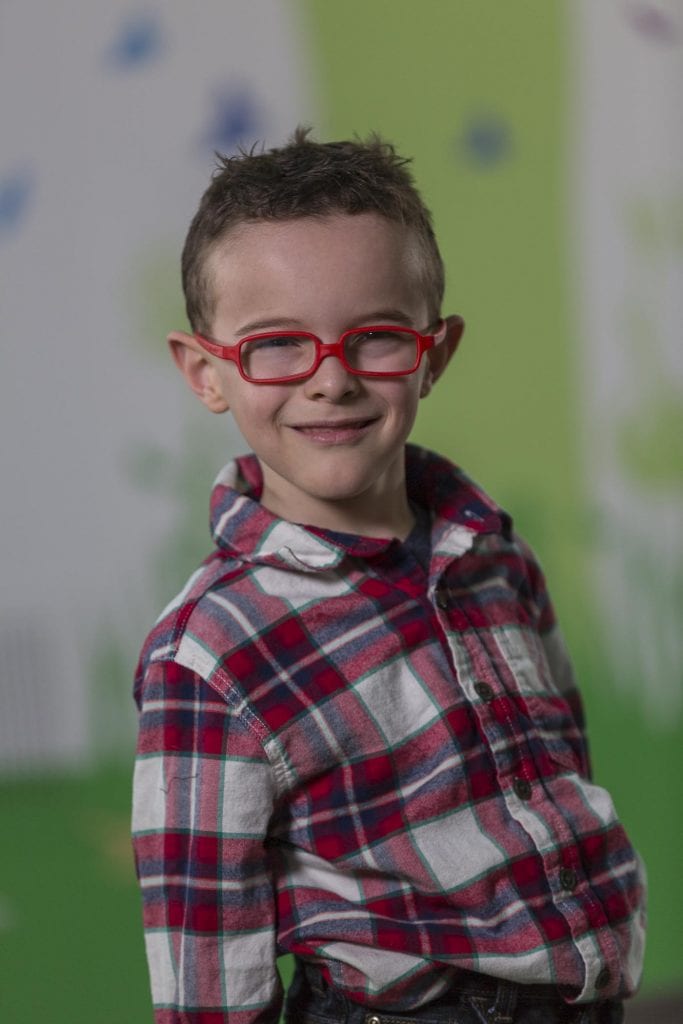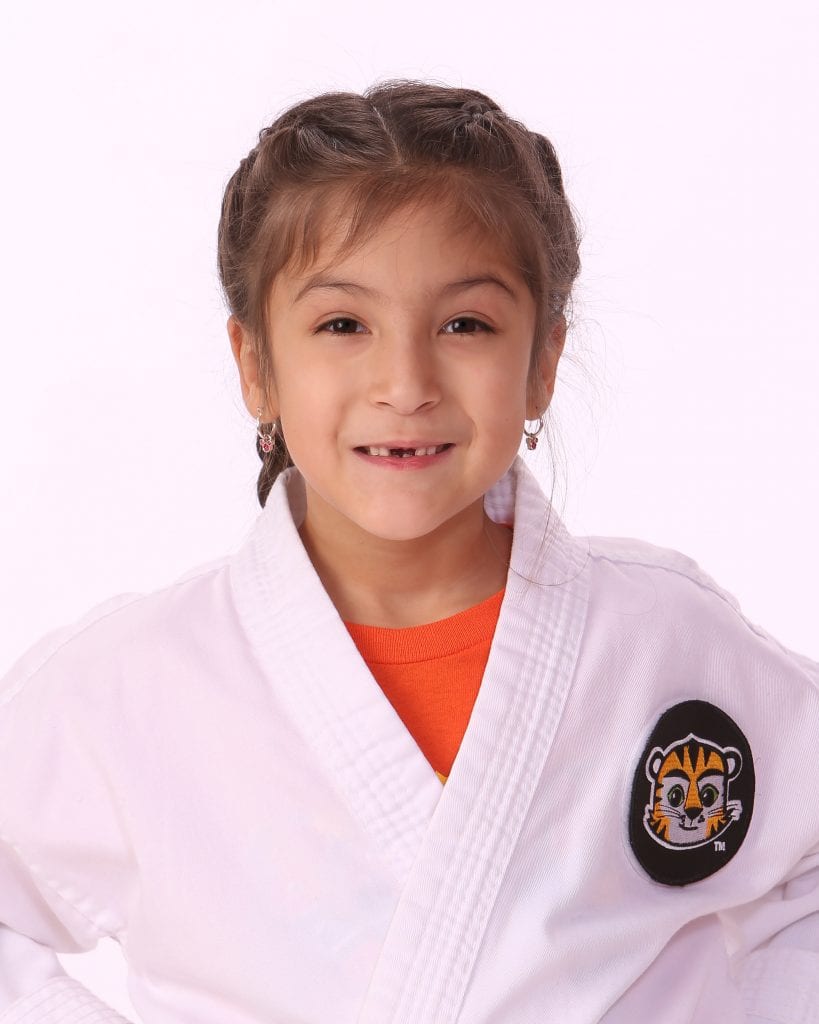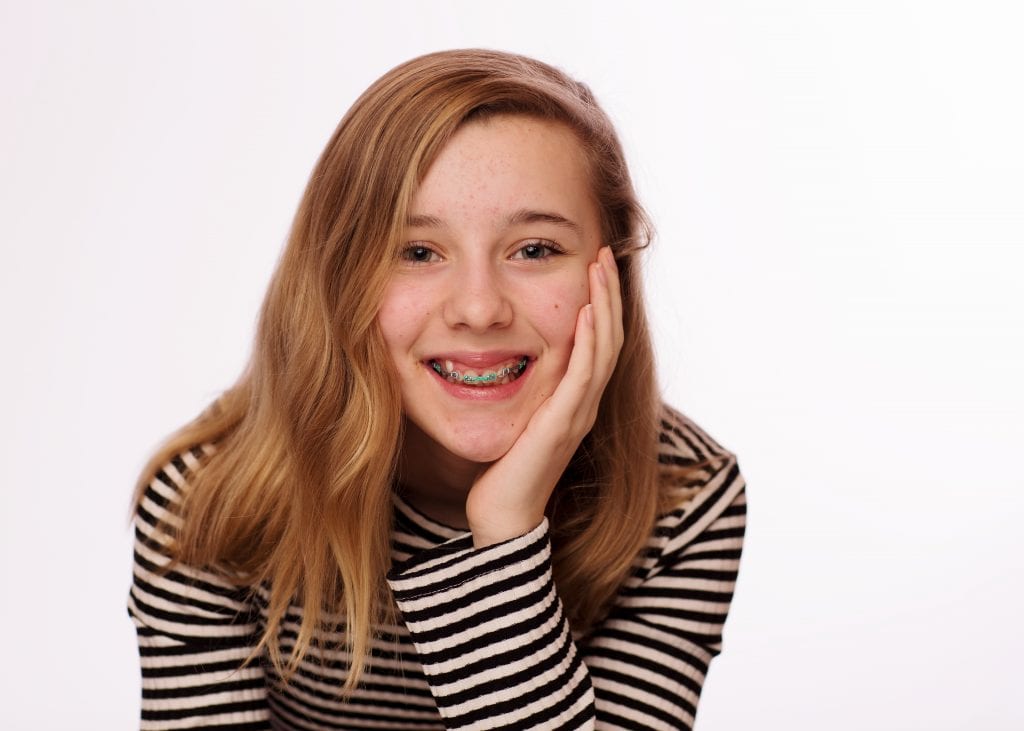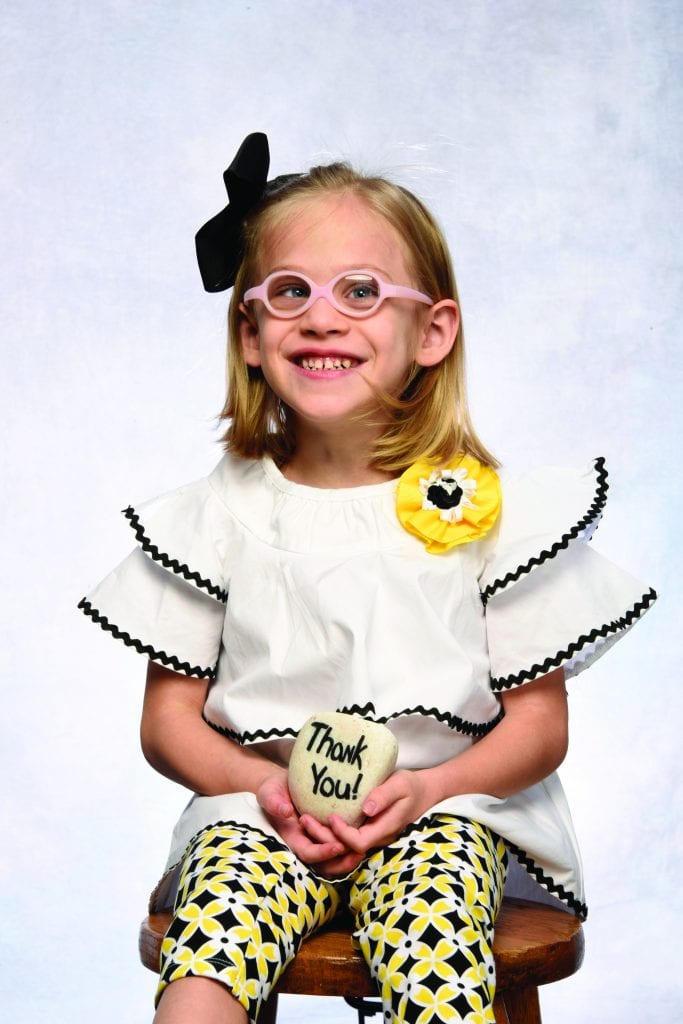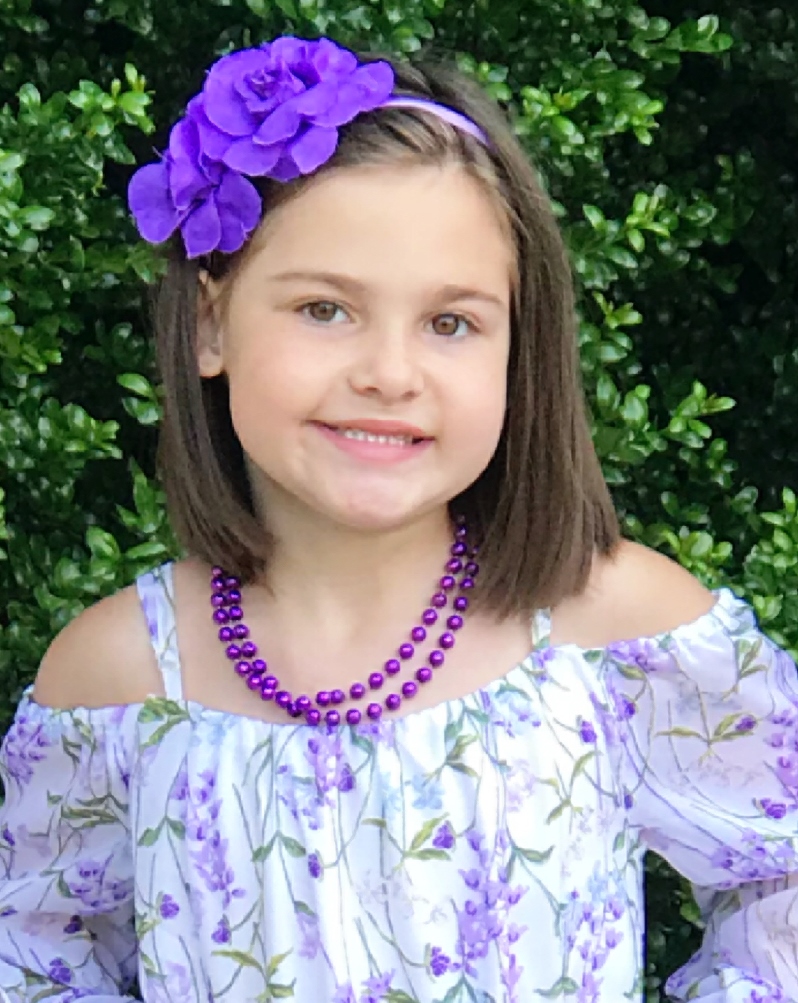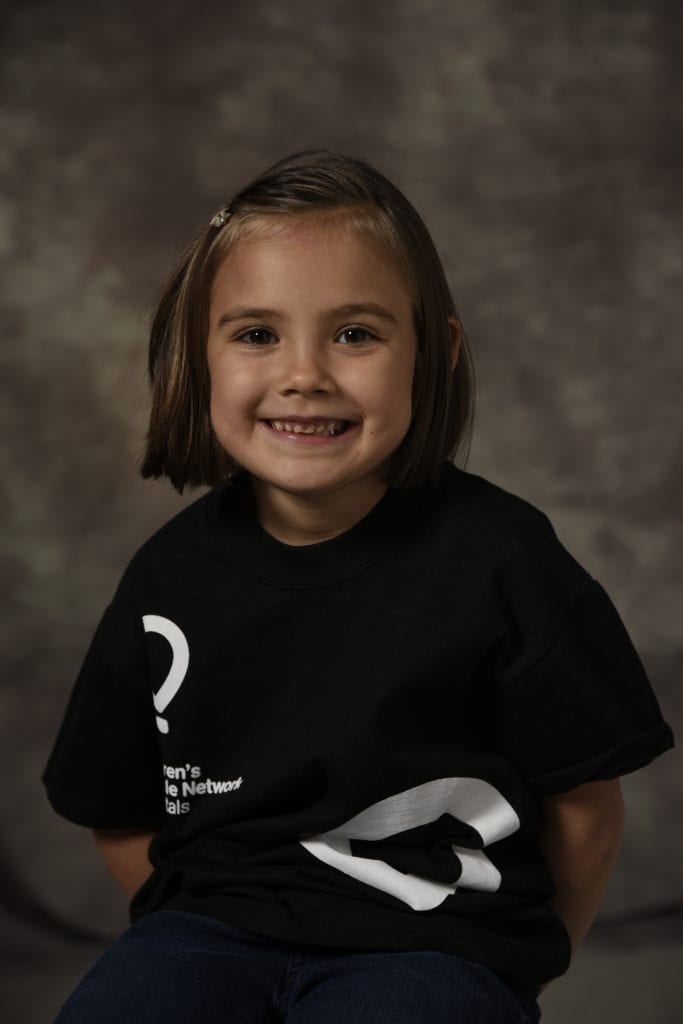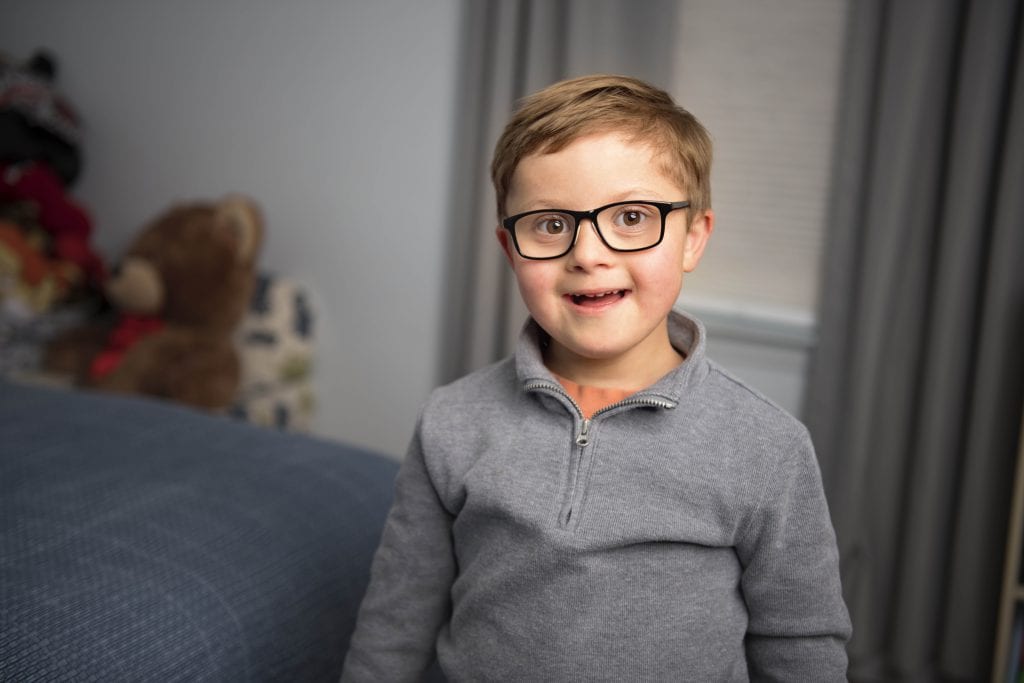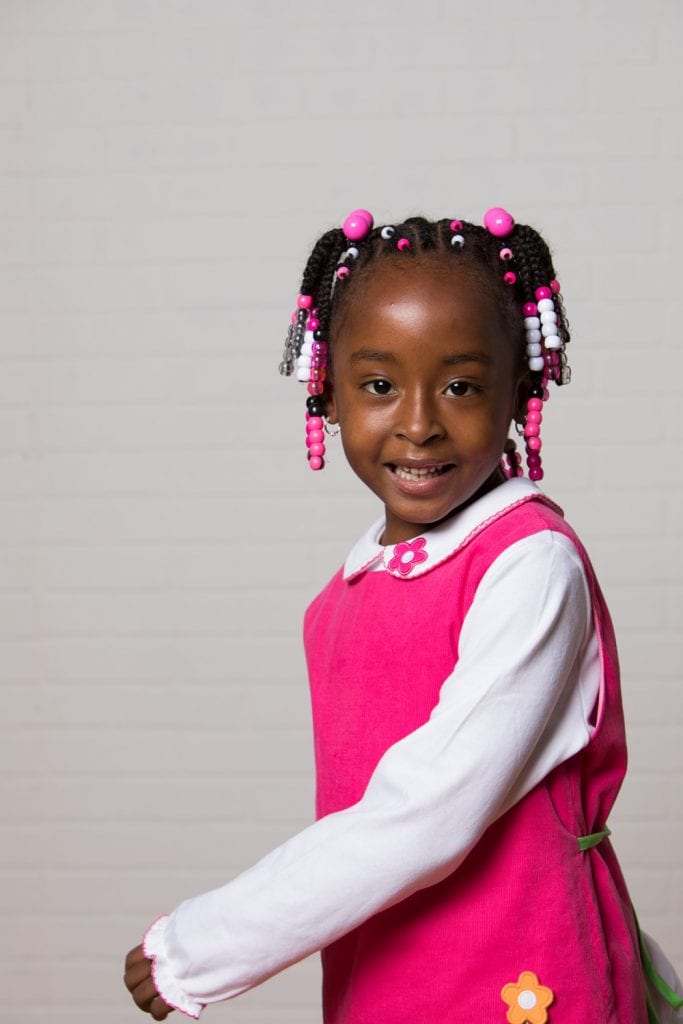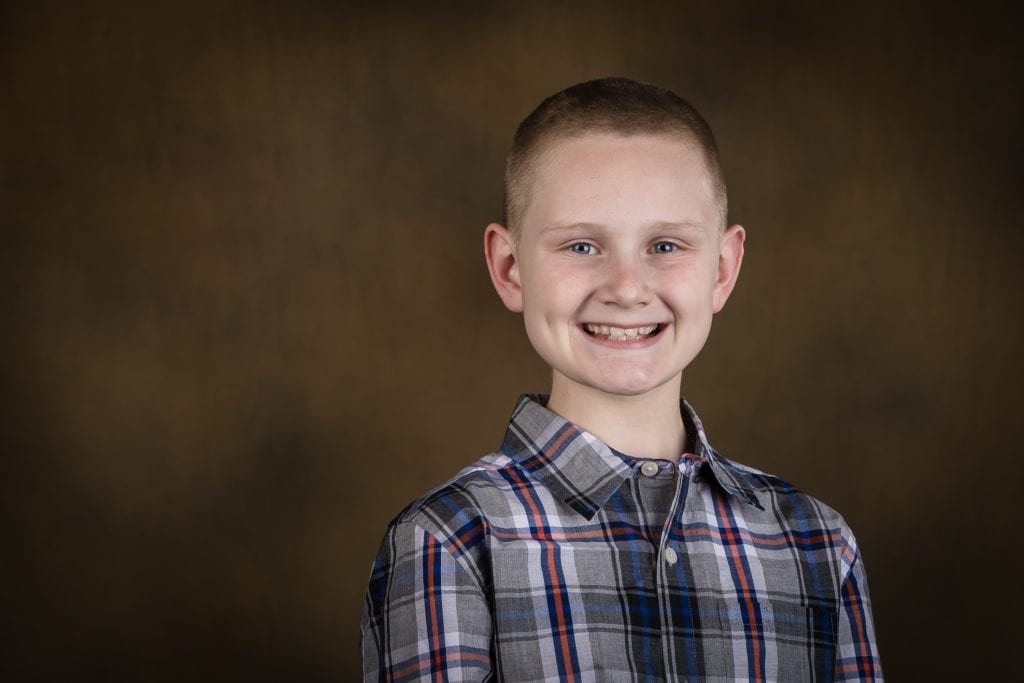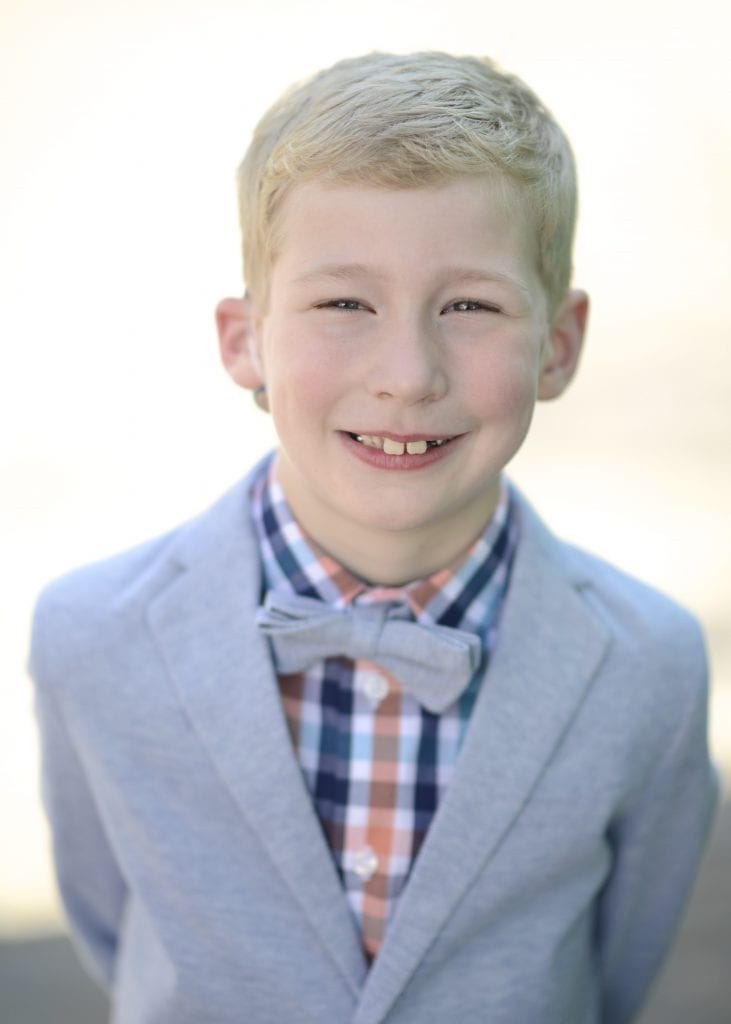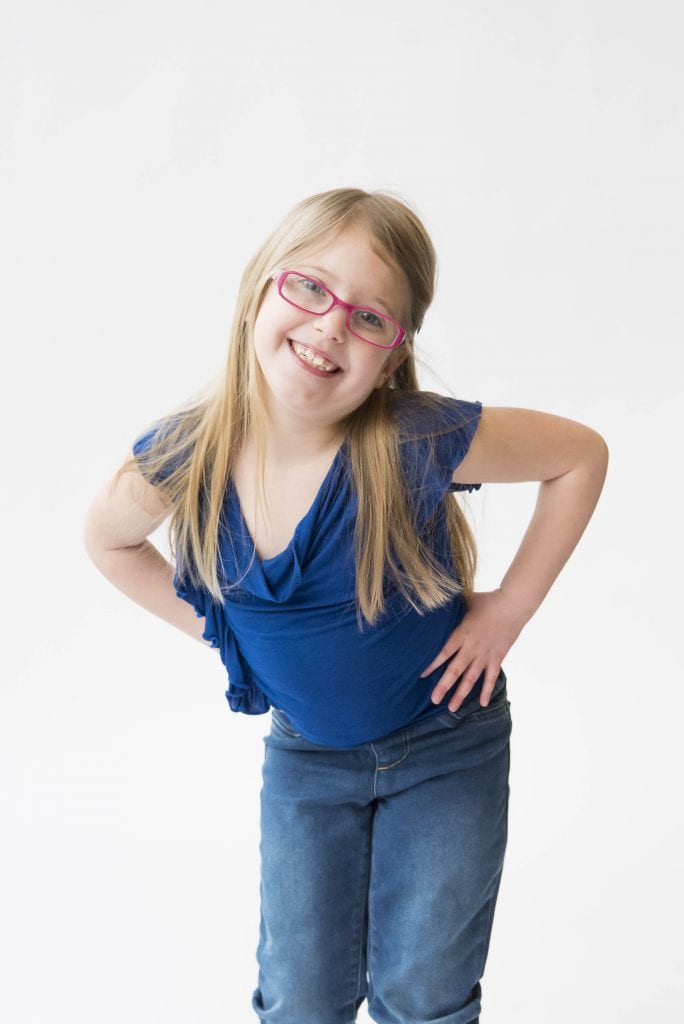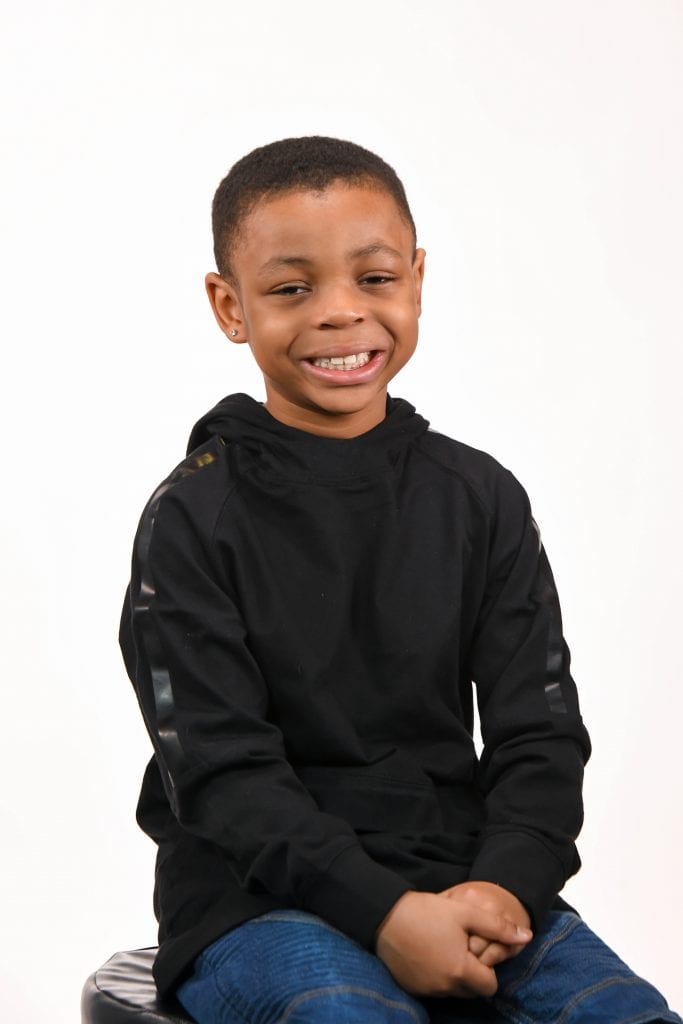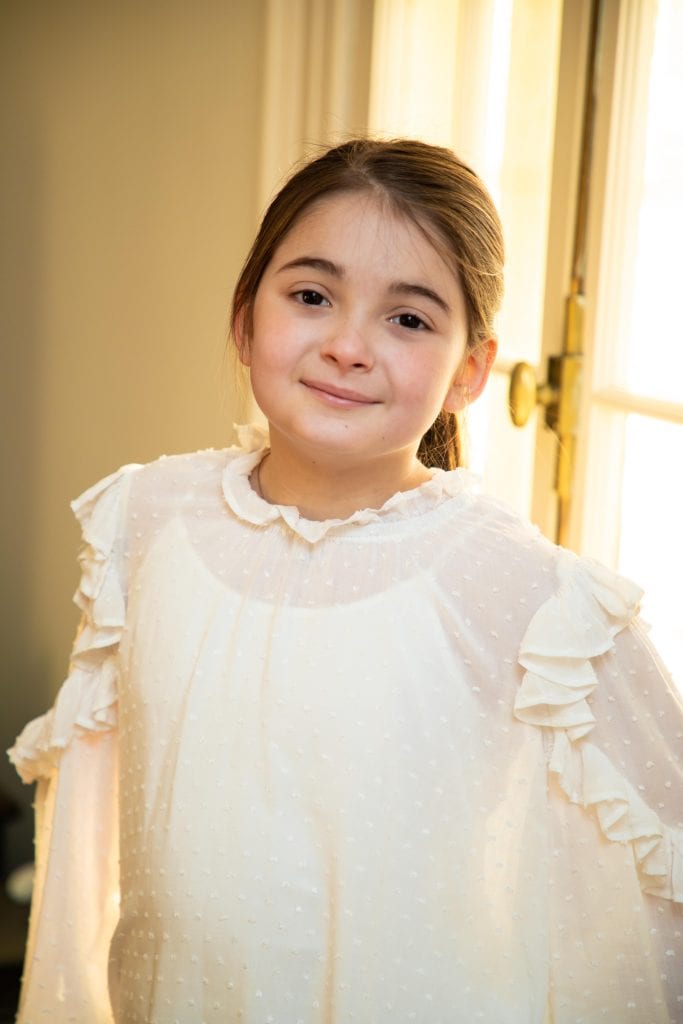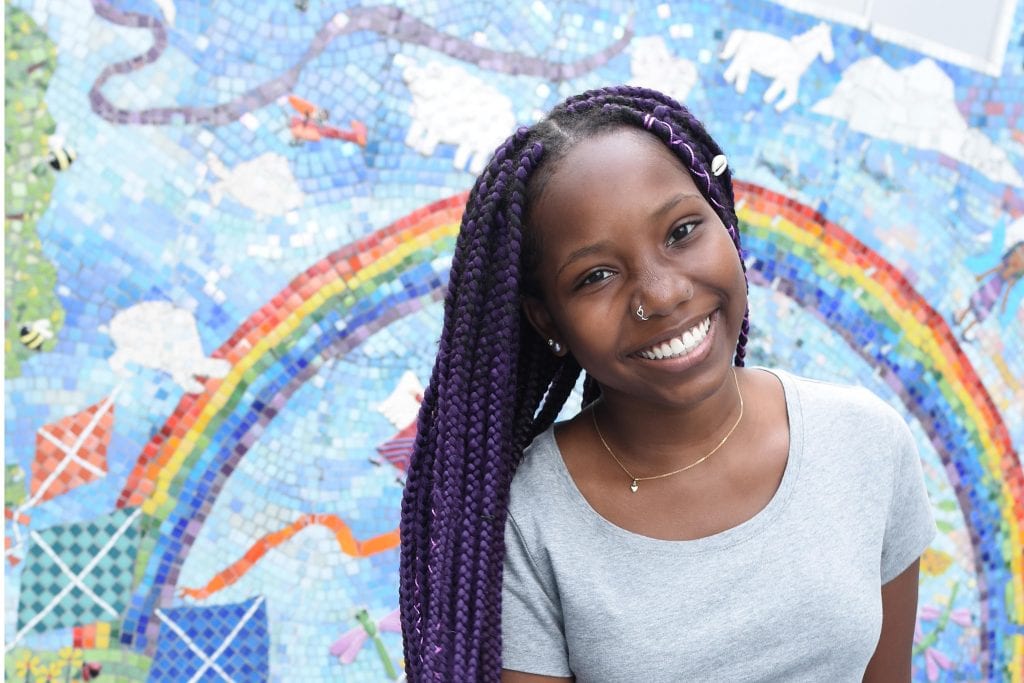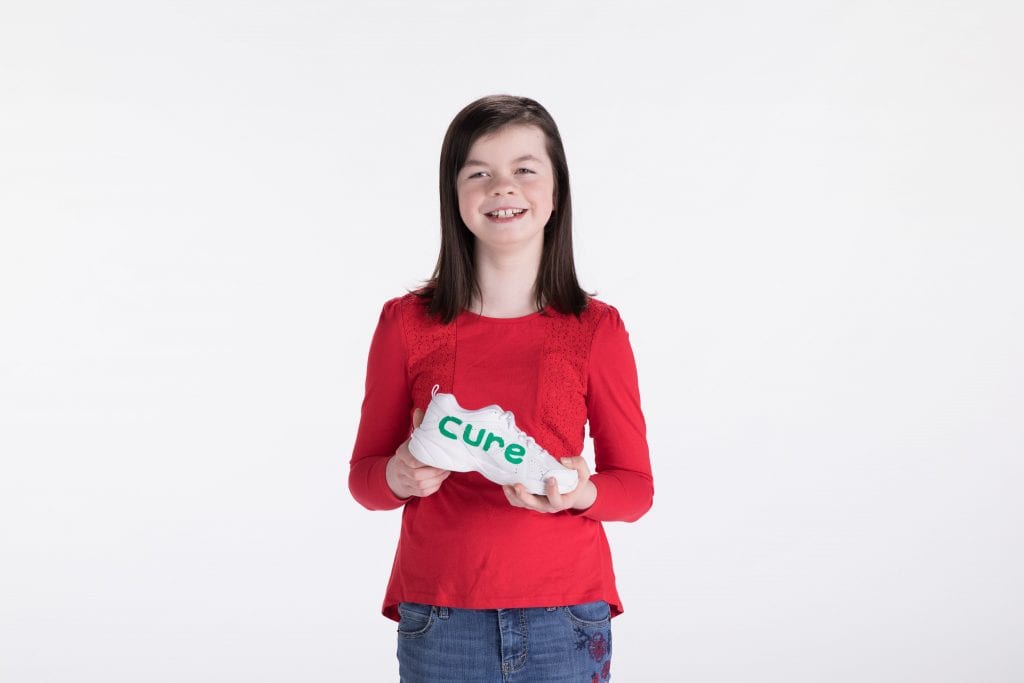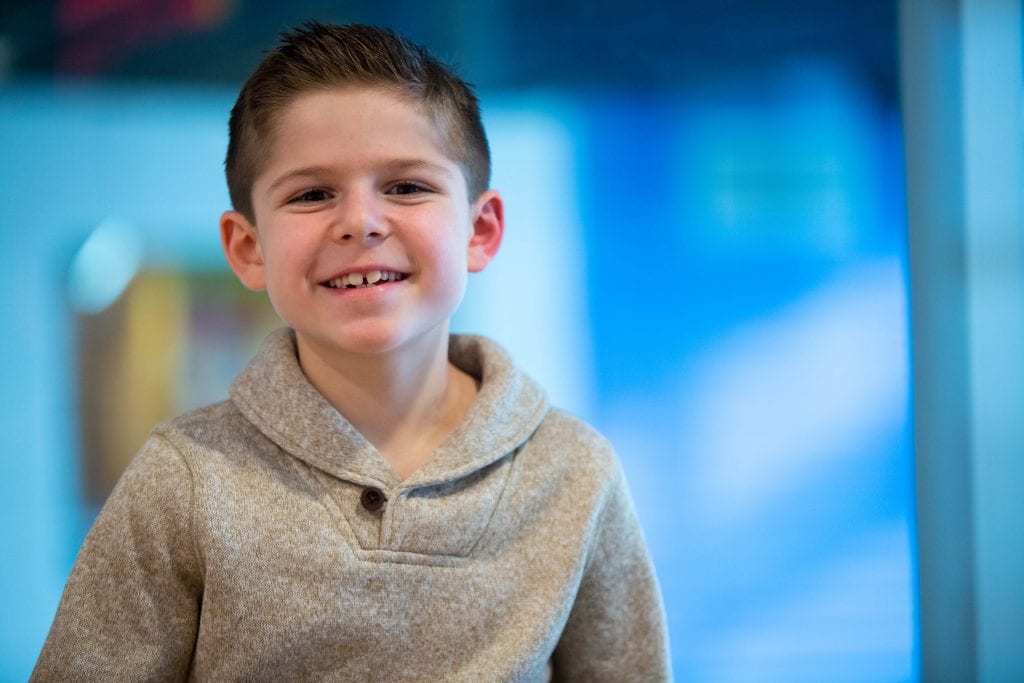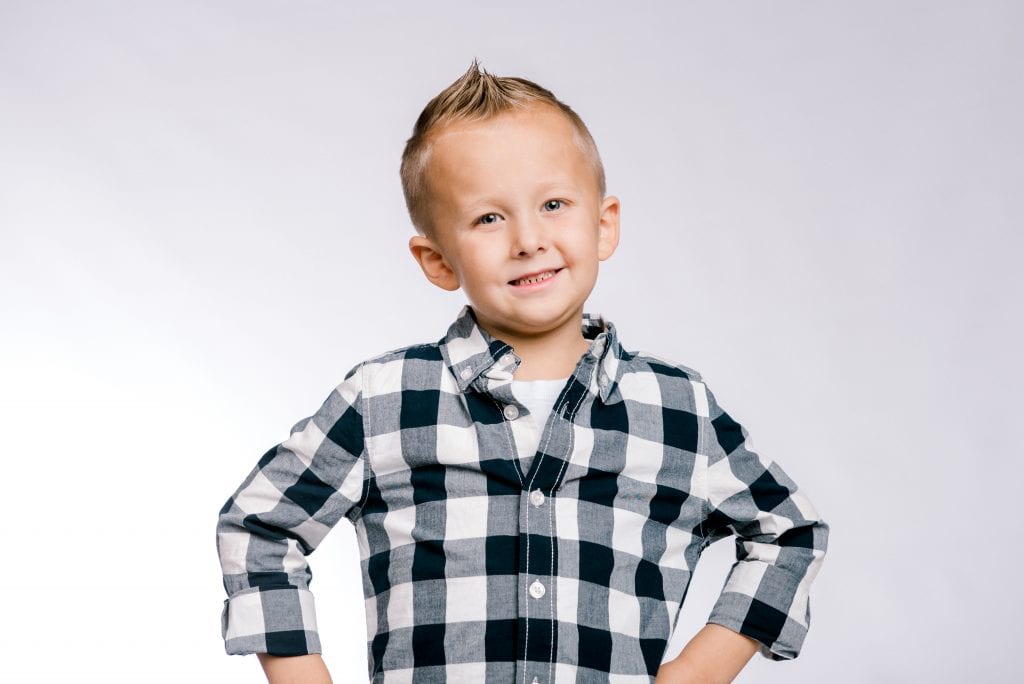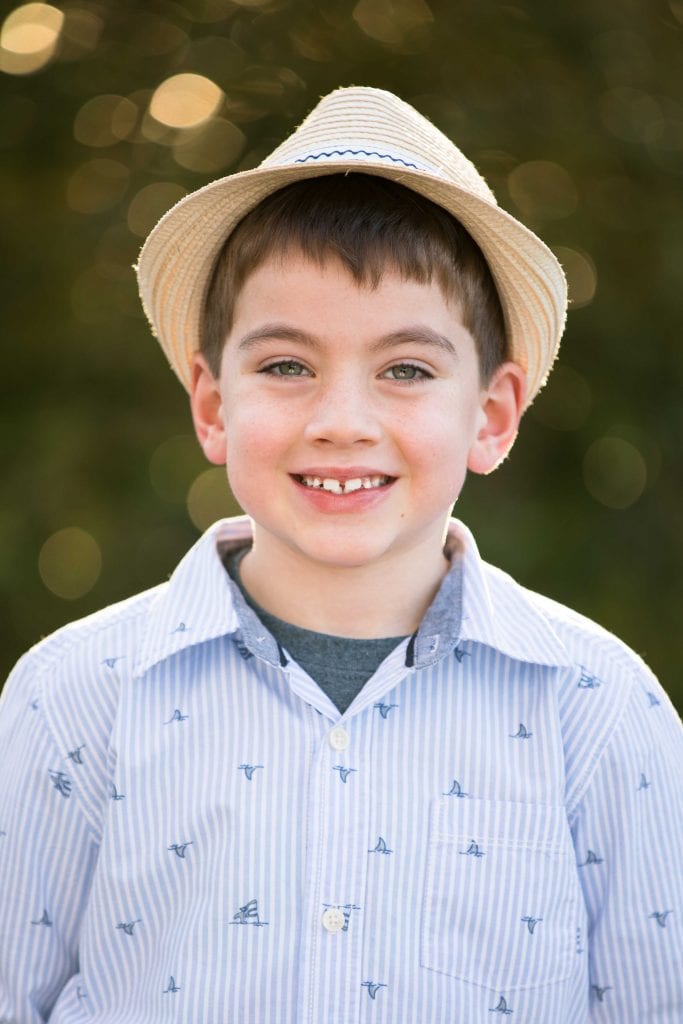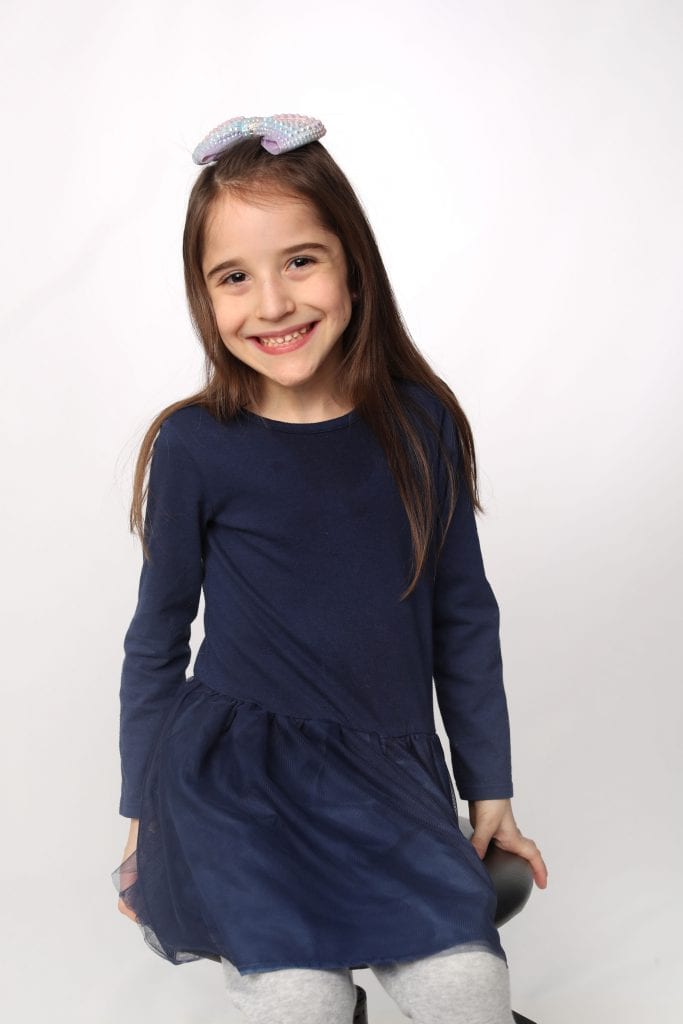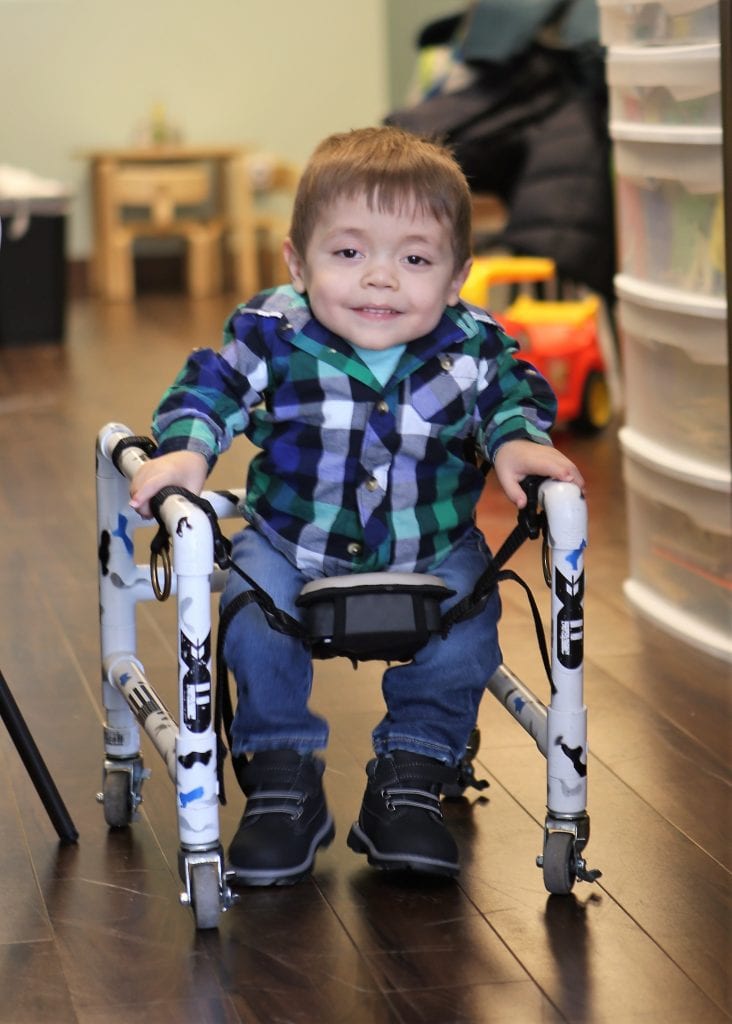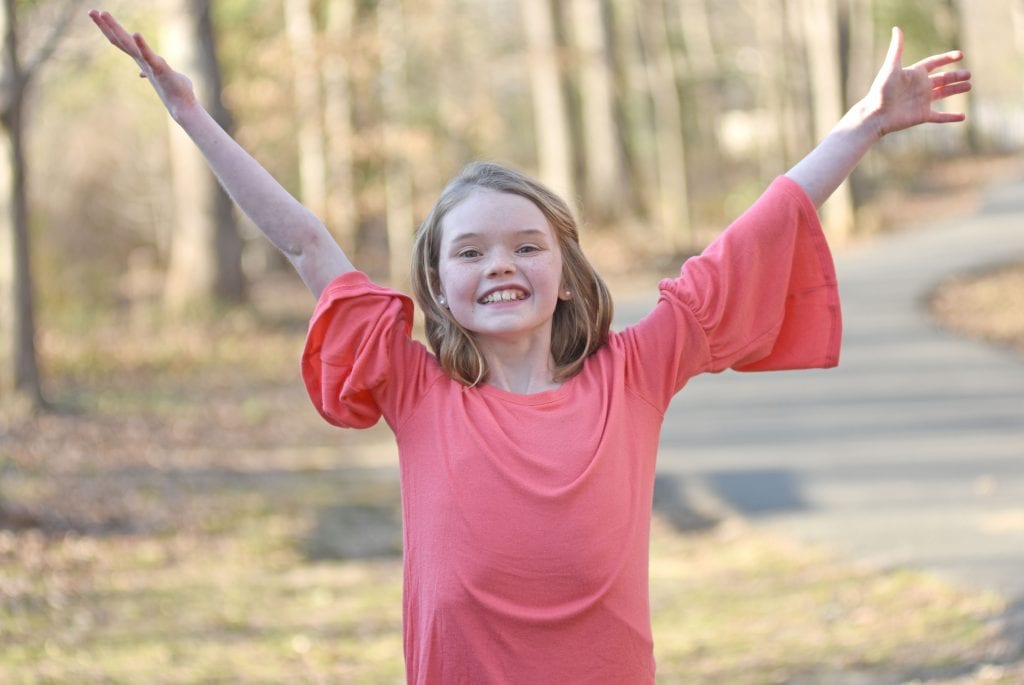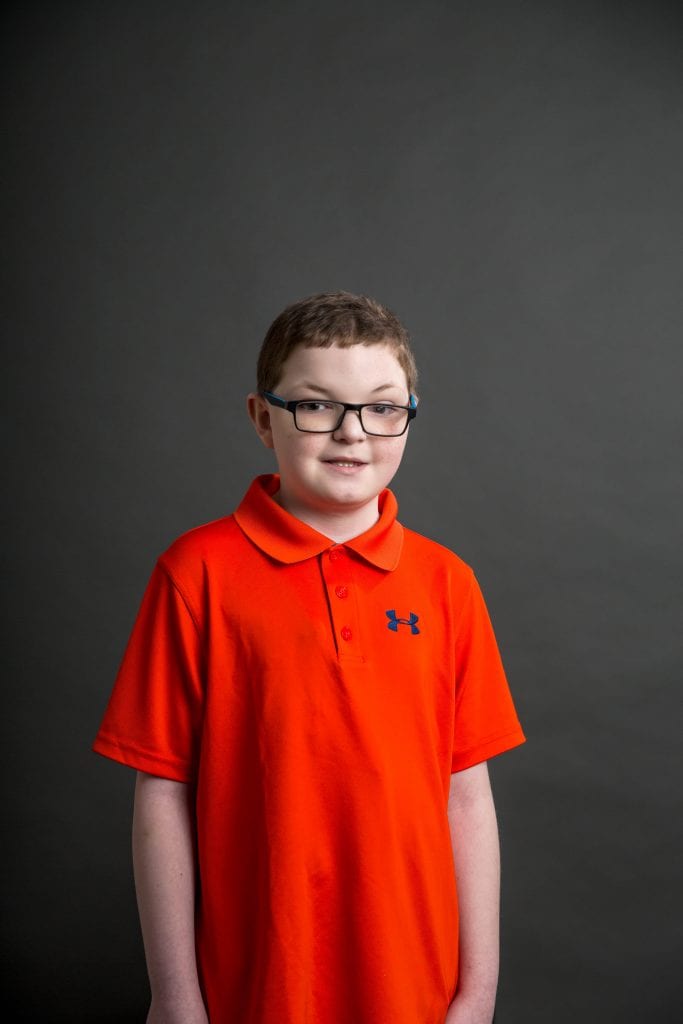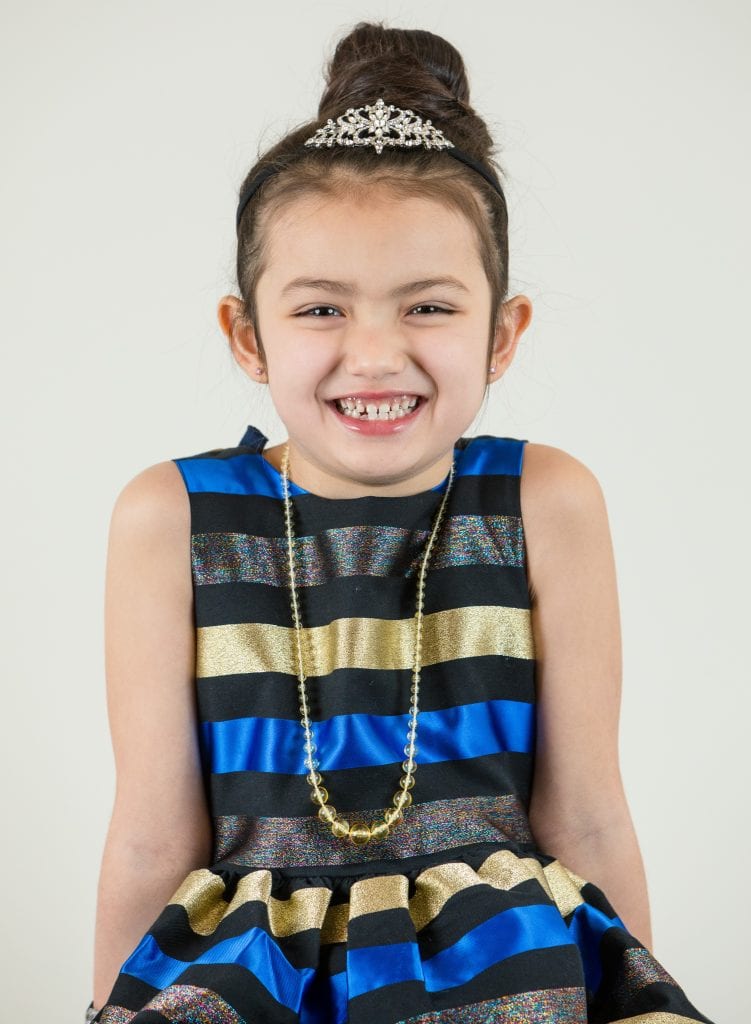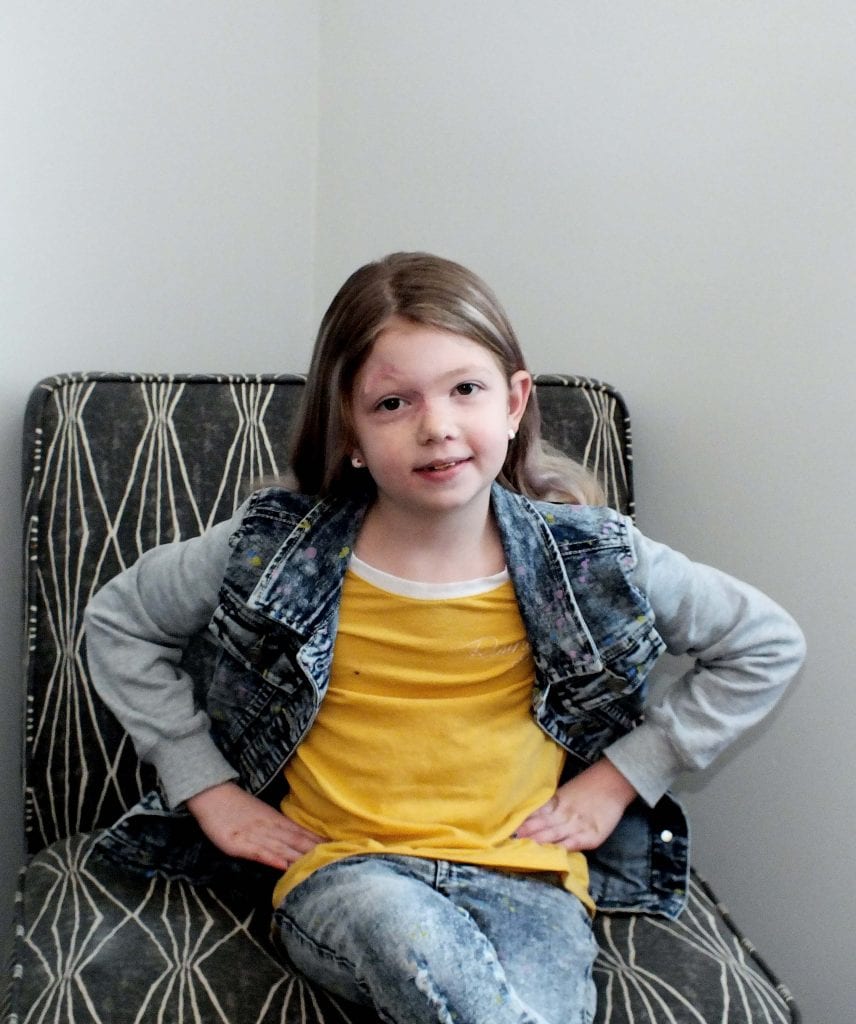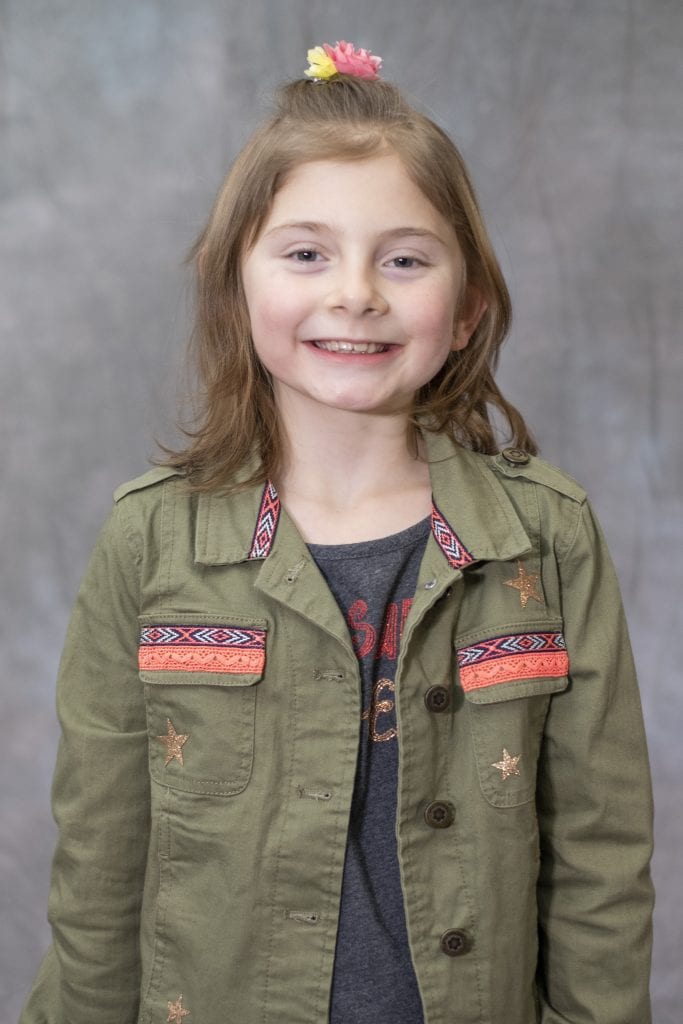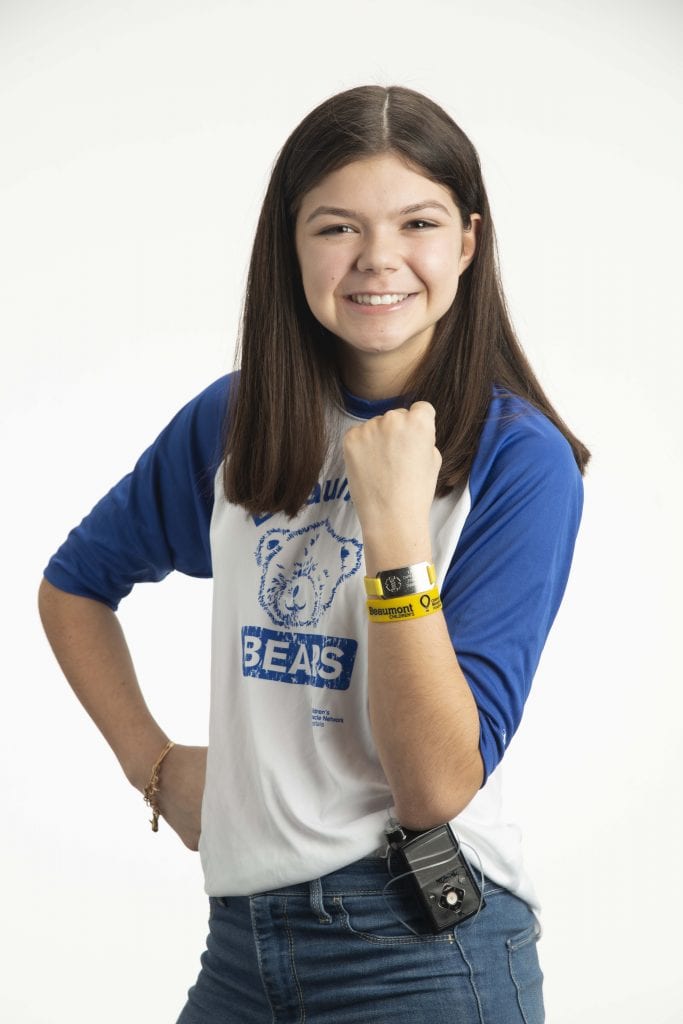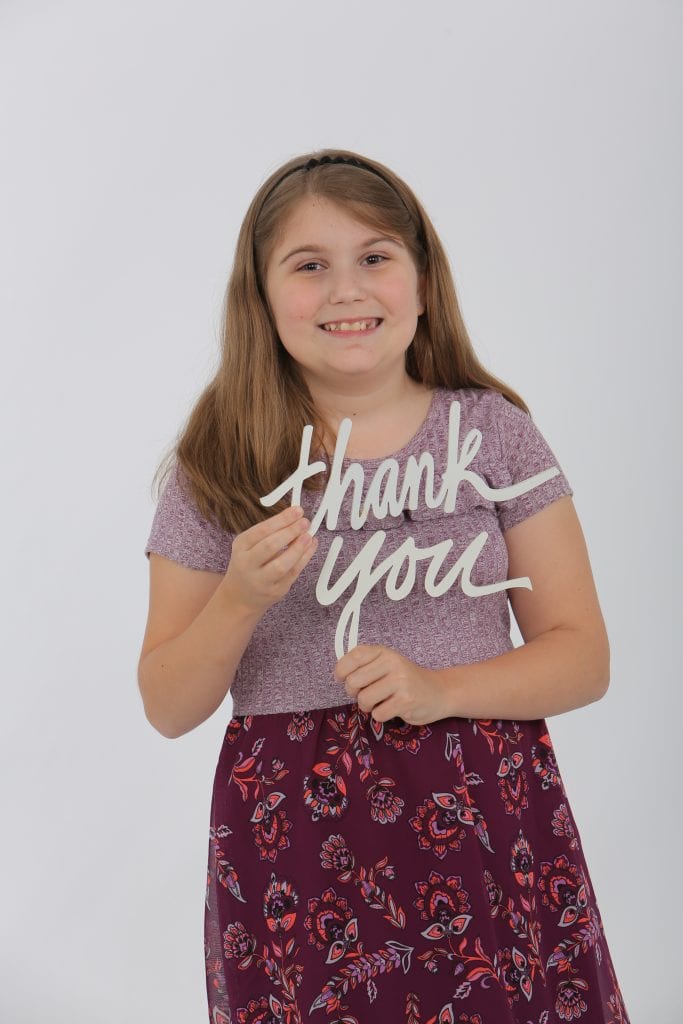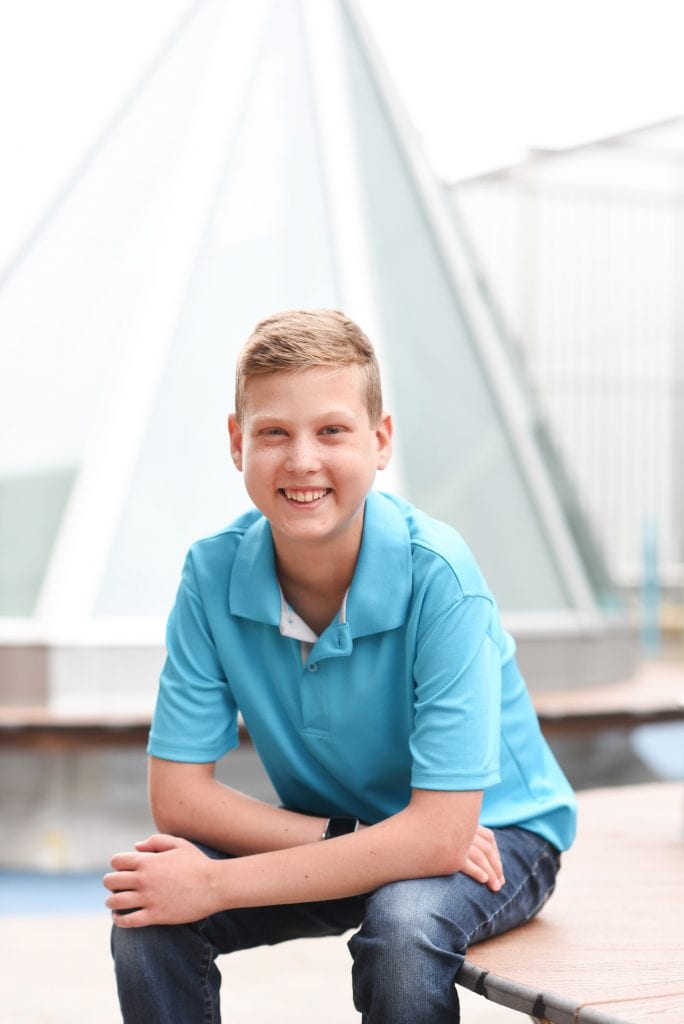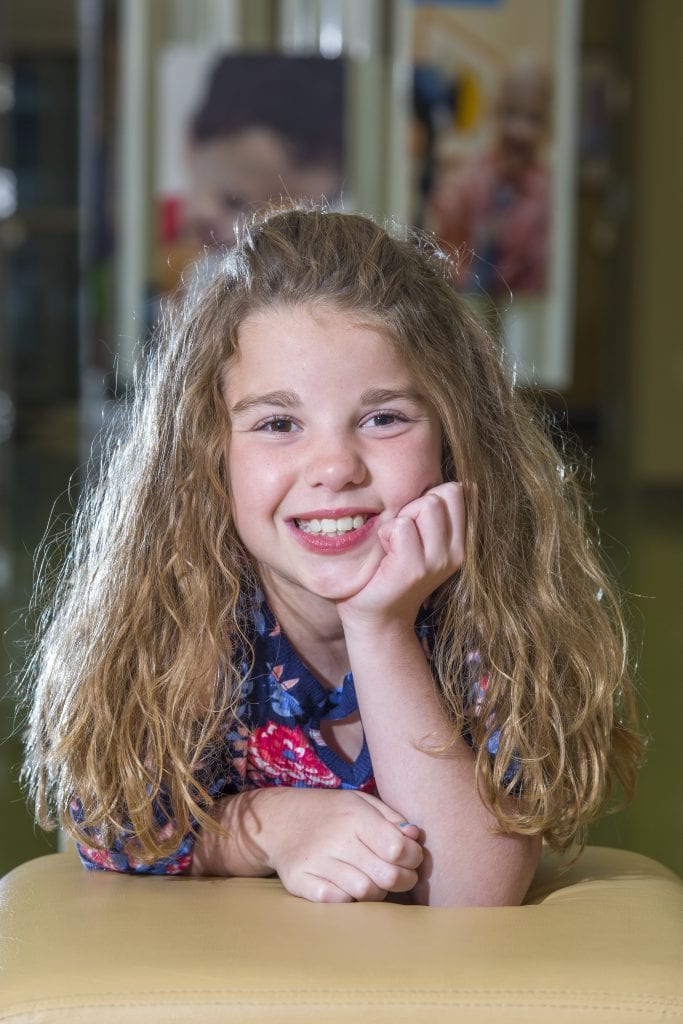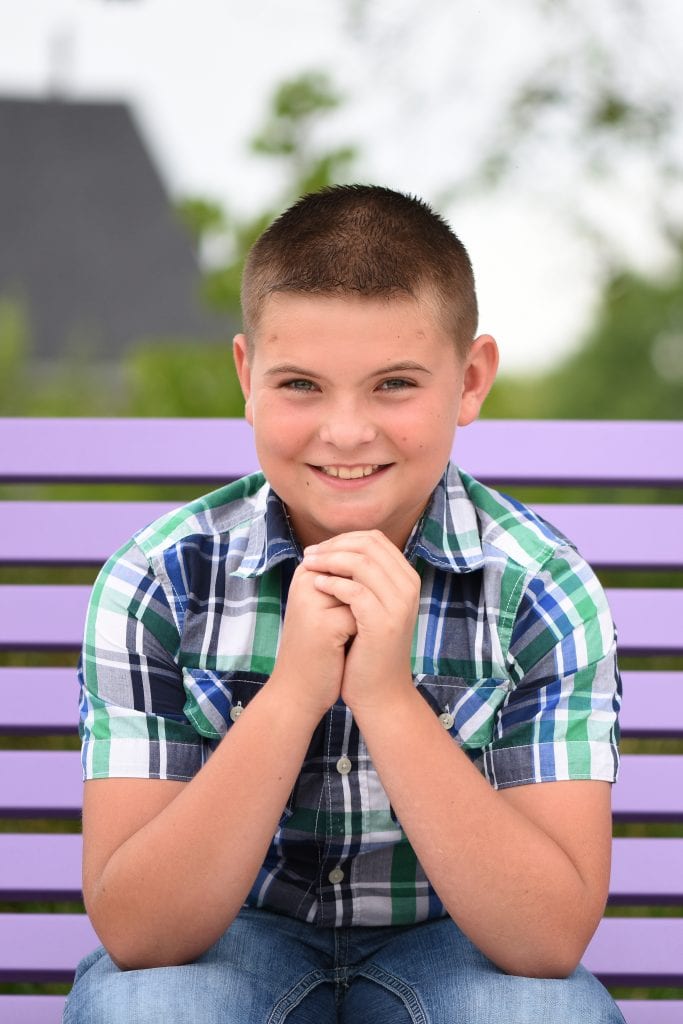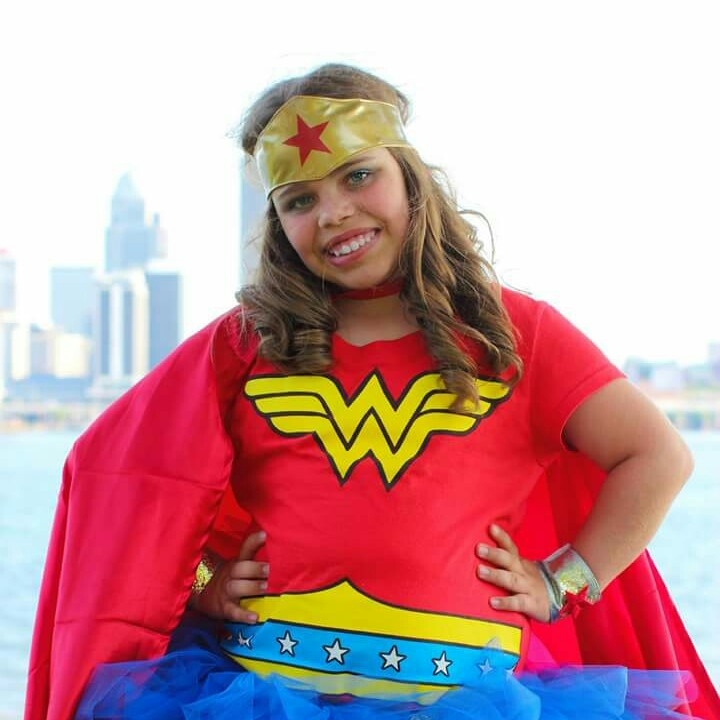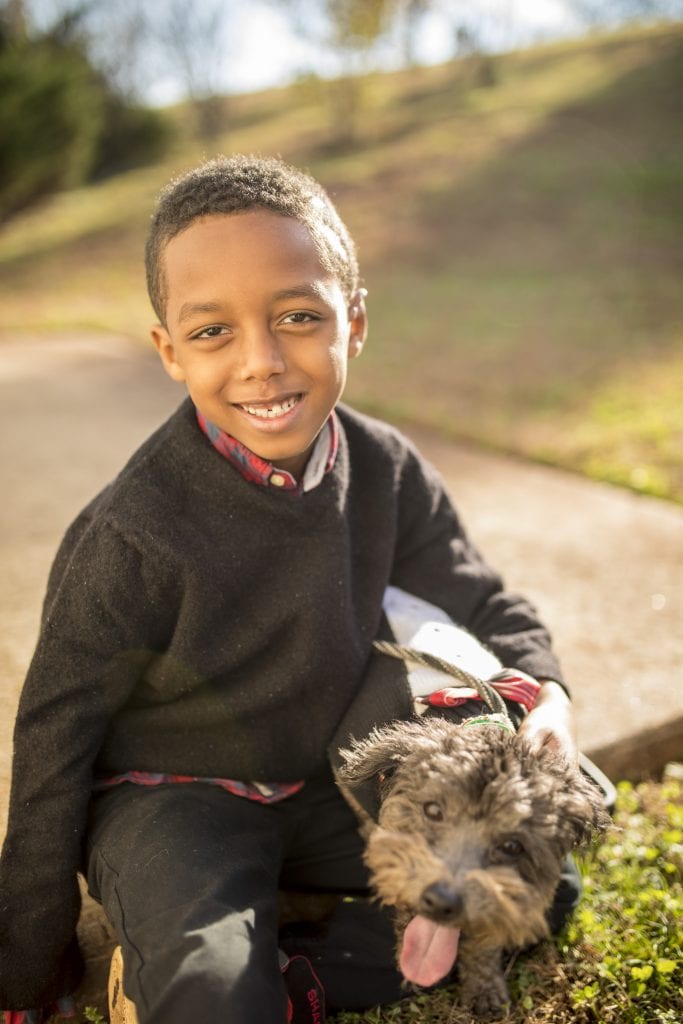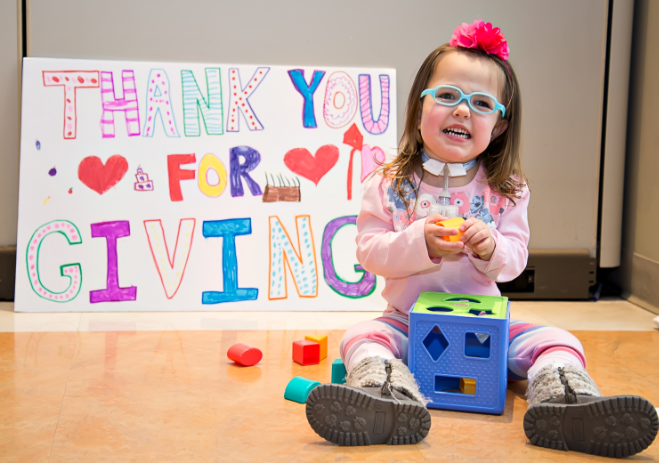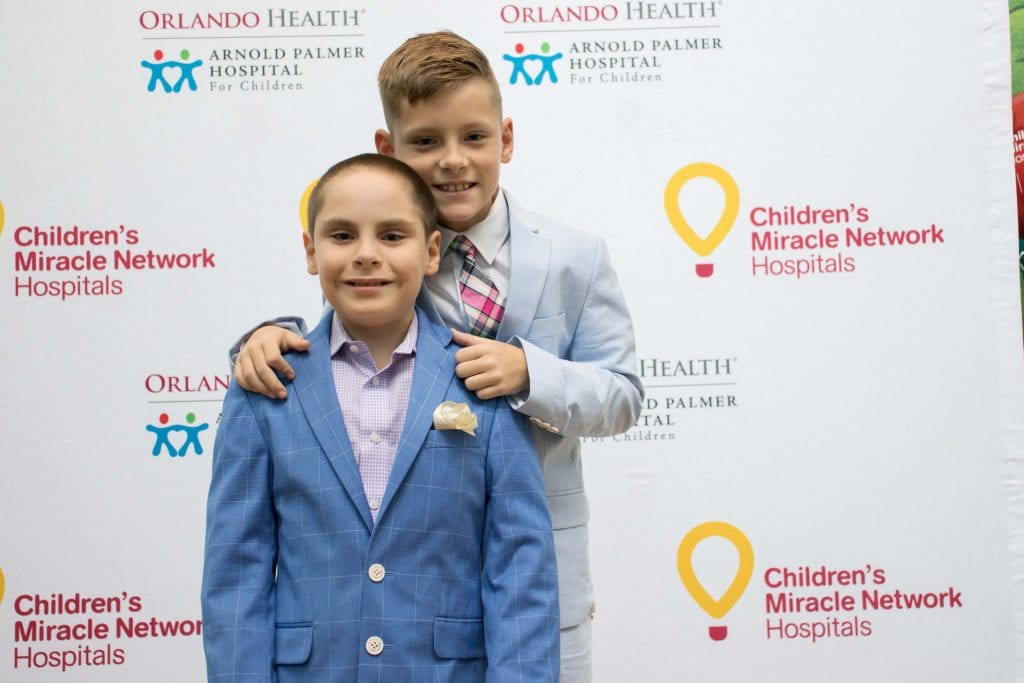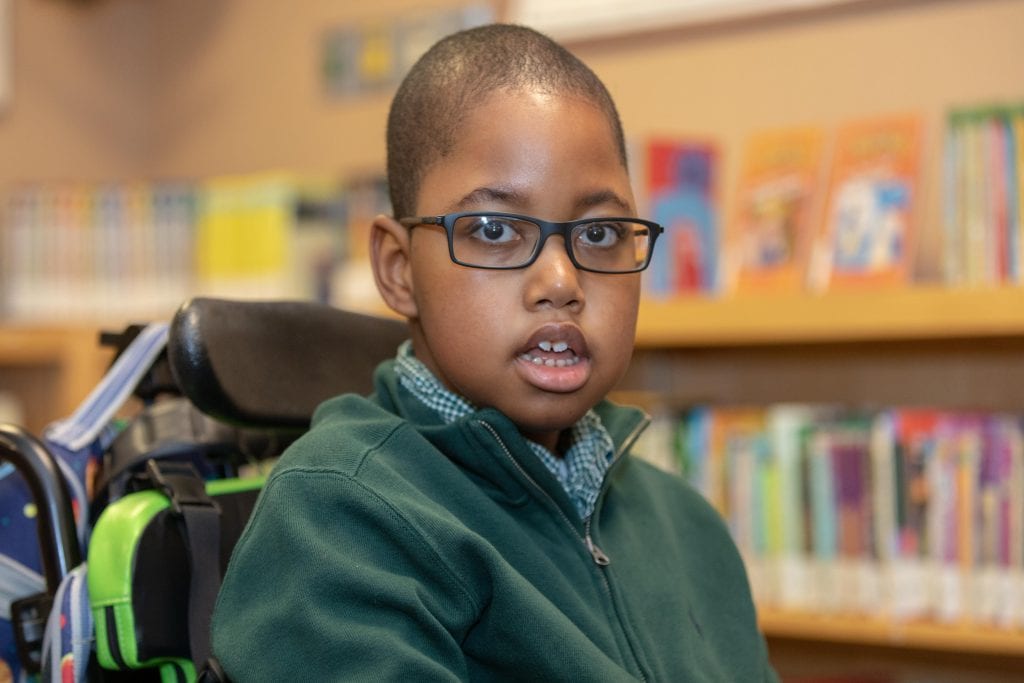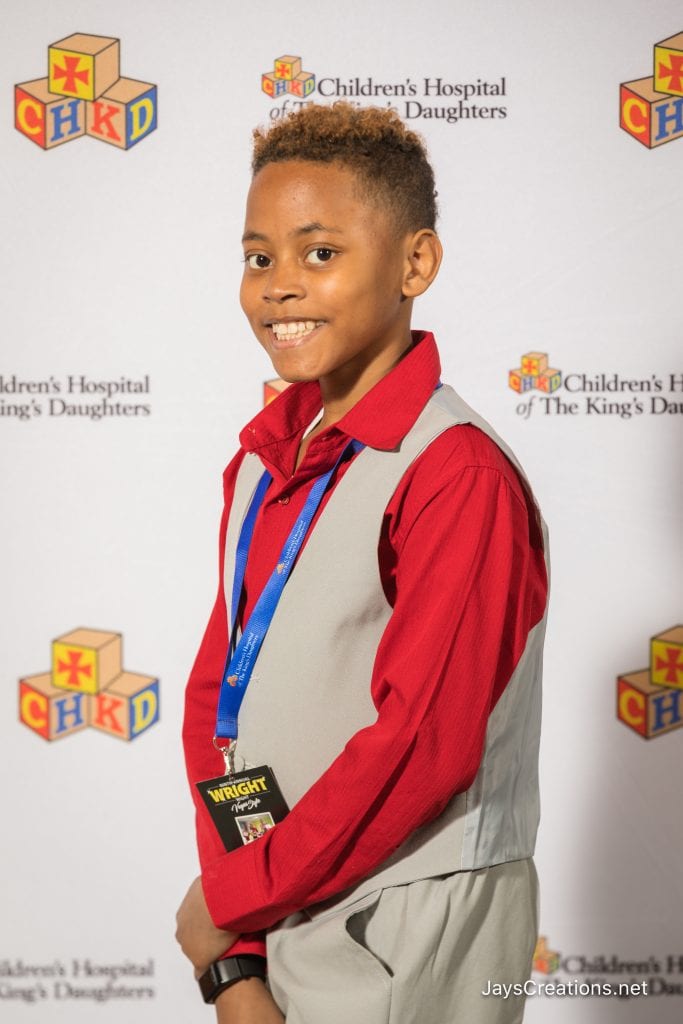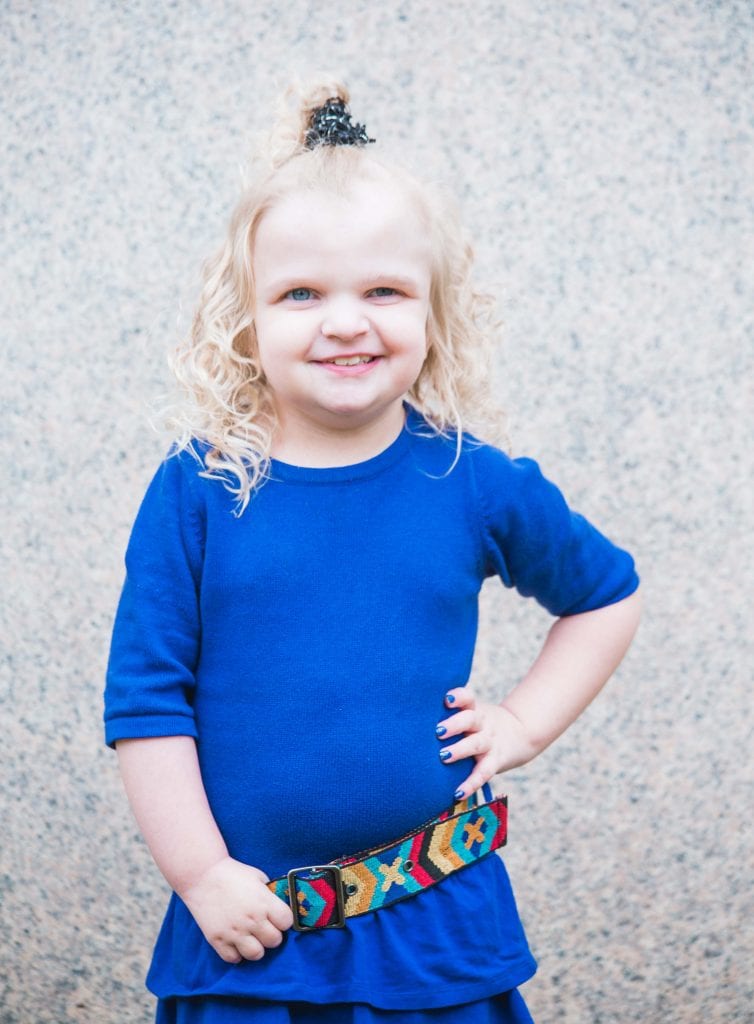Meet the 2019 Speedway Miracle Kids
Speedway’s annual Speedway Miracle Tournament—one of the largest golf fundraising tournaments held to benefit Children’s Miracle Network Hospitals—is happening June 10-11. The tournament raises awareness of the ongoing needs of children’s hospitals and the kids treated there. Speedway organizes the Miracle Children Program, where patient families from locally supported hospitals are able to share their stories with their communities. The firsthand experiences bring a personal touch to the cause and highlight the importance of donations to fund critical treatments and services.
Meet the 2019 Speedway Miracle kids!
Common Variable Immune Deficiency
Alexa is a freshman at Fayetteville-Manlius High School just outside of Syracuse, NY. Alexa loves kids and animals and volunteers for her neighborhood library and the Make a Wish Foundation. She has two brothers, Nico who is 6 and Dimitri who is 16, and a cat named Spoons.
Alexa has been sick since she was a little girl, first exhibiting low appetite and constant crying. She saw doctor after doctor but none of them knew what was wrong with her. Finally, at 2 ½ years old, doctors began testing her immune system and found out that her body was lacking the needed antibodies to fight off illness. To keep her immune system strong, they first started her on an infusion called subcutaneous, which she received at home. They soon realized she was allergic but found success when she started going to Upstate Golisano Children’s Hospital to get Immunoglobulin. While these treatments help Alexa, they can be long and grueling. She often sits for six hours in the hospital receiving the treatment, which means missing a lot of school, suffering from bad headaches and occasionally struggling to get the IV in correctly.
Despite all she has been through, Alexa has grown to love Upstate. She has formed bonds with all of the nurses, child life specialists and volunteers. The staff are very sweet to her and always make her smile, whether it be making cards for her on her birthday, hanging snowflakes on her IV pole or helping her with her homework. Alexa has plenty to do to keep her mind off things too, such as coloring, watching movies or visiting the teenaged playroom filled with Play Stations, reclining chairs and board games. Upstate does everything they can to make the day fun for patients and their families and provide a break from all of the doctors & needles. Alexa even made her own music video at the hospital!
Alexa feels Upstate has helped her to become a stronger person and to see the good in bad situations.

Alexis Simon, 15
Traumatic Brain Injury
It was a sunny June day when ten-year-old Alexis Simon was riding her bike near her home. Distracted by kittens that intersected her path, she crossed the road to play with them. On her way back across the street, she was struck by a car in the crosswalk. The front of the car hit the back tire of Alexis’ bicycle, causing her to flip over and hit the windshield. She was not wearing a helmet. Rushed to an acute care hospital, Alexis underwent seven hours of emergency surgery. She suffered a traumatic brain injury, a fracture of her C7 vertebrae, a broken leg, ruptured spleen and needed multiple skin grafts. Alexis’ mom, Katrice, has lost count of how many surgeries her little girl endured. Following her surgeries, Alexis was transferred to PSE&G Children’s Specialized Hospital, where she would go through weeks of physical, occupational and cognitive therapies to learn to walk again.
Alexis calls Children’s Specialized her “home away from home” and remembers that summer as a special time when she made new friends and almost forgot she was there for rehabilitation. Katrice stayed with Alexis every night and during the days, they worked hard with the doctors, nurses and therapists to get Alexis back on her feet. Alexis had to re-learn how to walk and go upstairs, “I had to learn how to do all the basics again and CSH was right there with me, continuously guiding me and supporting me. In the time span of six weeks, my physical therapist got me from sitting in a wheelchair, to using a walker, then to crutches. The day I took my first steps was one of the proudest days I remember.”
Four years after her accident, she is currently a musical theater major at the Professional Performing Arts High School in New York City and has performed in over seven musicals in less than two years. Alexis and her family are grateful for the inpatient and outpatient care that Alexis received at Children’s Specialized Hospital. With the help of her doctors and therapists, Alexis is able to pursue her love of the arts and follow her dreams. She is a true Champion!

Amelia Evans, 5
Down Syndrome and Acute Megakaryoblastic Leukemia
As a baby, Amelia went to the doctor for a routine visit, where her parents mentioned that a small rash had developed. What they thought was eczema or dry skin turned out to be something much worse. At 9-months-old, Amelia was diagnosed with Acute Megakaryoblastic Leukemia, a sub type of Acute Myeloid Leukemia (AML). She received six rounds of chemotherapy in the Kids Immunosuppressed Specialty Unit (KISU). She went home Dec. 3, 2014 after spending 146 days in James and Connie Maynard Children’s Hospital. Today, she’s an easy going 5-year-old who loves music (Trolls soundtrack specifically), Mickey and Minnie Mouse and, of course, her best friend, big sister Taylor.

Benjamin Bonilla, 5
Food Protein-Induced Enterocolitis Syndrome (FPIES)
From the moment he was born, Benjamin suffered severe reflux, vomiting and diarrhea. He couldn’t tolerate breast milk and most infant formula, so he struggled to gain weight. His cry, which was more like a scream, was evidence that he was in excruciating pain. His parents took him to doctor after doctor, but no one could pinpoint the problem. After months of anguish, his parents sought care at Children’s Hospital of Philadelphia (CHOP) and finally got a diagnosis: Food Protein-induced Enterocolitis Syndrome (FPIES), a rare food allergy. CHOP is one of the only hospitals in the country with a specialized clinic for FPIES.
Care involved all-day evaluations to determine which foods were triggering Benjamin’s symptoms. During those long stays at the hospital, the Patient and Family Services team at CHOP would keep Benjamin entertained with fun activities. “If it wasn’t for them, he probably wouldn’t have made it the whole day,” says Benjamin’s mom, Danielle. “They made sure he had whatever he wanted.”
With the removal of Benjamin’s trigger foods, his symptoms have subsided. He is now a happy, pain-free 5 year old who is gaining weight and thriving. Funds raised through Children’s Miracle Network support CHOP’s Patient and Family Services programs, which help children like Benjamin and their families cope with the hospital experience.

Brayden Griess, 7
Aplastic Anemia (in remission)
Brayden was two when he was diagnosed with Aplastic Anemia. The next two years were spent in the inpatient and outpatient world of Hematology/Oncology. Through it all, Brayden kept his spirits up and tried to make friends and cheer up other kids who were receiving care in Nationwide Children’s Outpatient Hem/Onc clinic. One day during art therapy in the clinic when Brayden was receiving treatments, he befriended a scared and very shy little girl. Brayden felt bad because she looked like she wanted to do the art project but seemed too afraid. He walked around the table and asked her if she would be his friend, so they could do the art project together. The little girl smiled, and they spent the next hour together making beautiful pictures with water color paints.
Brayden is an only child, which makes things very hard on his family while he is going through the inpatient and outpatient treatments. However, out of his experience came many opportunities for demonstrating gratefulness and taking advantage of opportunities to give back. Brayden became a Patient Champion so he could share his story in the hopes that it would inspire other people, and he really wants to help other kids.
Brayden is now a healthy seven-year-old second grader in remission. There was a time when he was not able to go to the grocery store because he was immune-suppressed. Now, he is taking swimming lessons, learning how to ice skate so he can play hockey, and he wants to play soccer! Brayden enjoys playing video games on his Nintendo Switch, Star Wars Legos, winning light saber battles against his mother, playing air hockey and watching movies cuddled up on the couch with his cat, Sherrie.
His family is grateful for his recovery, and as he so very well stated, “I’m so glad that we were strong enough to make it through all that, and that I’m all better now.”

Carmen Roberts, 6
Extreme prematurity, low birth weight, respiratory distress
Carmen entered the world on July 2, 2012, at a weight of just 1 pound 8 ounces – approximately three months early, and the odds were not in her favor. She was underdeveloped to the extent that her parents could not even touch her, because a simple loving touch could have hurt her translucent skin. She was not supposed to be in the outside world; her body should have been growing in her mother’s womb where she was protected. Carmen was now outside in our world, and without all the defenses and protections she was supposed to have at birth. In the following weeks after her birth, it seemed that each day brought a different battle. Carmen had been getting infection after infection, which can be fatal for a preemie. Thankfully, through the tireless diligence of Sparrow’s Regional Neonatal Intensive Care Unit (RNICU) staff, they were able to identify the cause and treat it.
In the following weeks and months, more challenges arose for Carmen, but with the aid of her RNICU family, she was able to overcome them. Carmen was finally hitting major preemie milestones to the satisfaction of her doctors and RNICU staff. After 122 days, sweet Carmen was finally ready to go home. Six years later, Carmen is now thriving and in kindergarten. Her parents are forever grateful to Sparrow and the exceptional caregivers in the RNICU. Carmen is a fighter and a miracle.

Caroline Pattillo, 13
Internal injuries from boating accident
In June 2016, Caroline suffered extensive internal injuries from a boating accident. She was airlifted from her hometown of Bloomington, IN to Riley Hospital for Children in Indianapolis, where Matthew Landman, M.D., and his team were awaiting her arrival in Indiana’s only Level 1 Pediatric Trauma Center.
Caroline’s upbeat attitude during her four-week stay at Riley earned her the nickname “Super C,” and the supportive environment helped her find her voice as an advocate for her own healing. Today, Caroline is a vibrant 13-year-old who plays multiple sports, including volleyball, swimming and loves to explore. Her family recently lived in Germany for a year.
She is also passionate about giving back to other kids who need care like she did. She hopes to certify her family’s dog as a therapy dog and is focused on becoming a pediatric surgeon someday.
“We are very grateful that Riley was there,” her mom Kerry shared. “We never forget that Caroline’s spark and spunk could have been diminished by her accident, and instead it was enhanced.”

Caydence Quesada, 6
Septo Optic Dysplasia
At the time of her birth, which is when Caydence’s parents adopted her, there were no known abnormalities or disabilities present. However, at two months old, they started noticing Caydence’s eyes were not tracking normally for her age. They made an appointment with her pediatrician, who agreed something was not right. They were referred to an ophthalmologist at Storm Eye Institute at MUSC. A series of tests were conducted, and Caydence was diagnosed with optic nerve atrophy (weak optic nerves), Nystagmus (involuntary eye movements), and Strabismus (involuntary crossing of the eyes).
Caydence’s condition is called Septo-Optic Dysplasia, which is a rare congenital condition characterized by the underdevelopment of the optic nerve, pituitary gland dysfunction and the absence of the septum pellucidum (part of the brain connecting the two hemispheres). Caydence was born with the complete absence of the septum pellucidum and hypoplasia of the corpus callosum, which affects her vision. She has an eye disorder called Nystagmus, which is a vision condition in which the eyes make repetitive, uncontrolled movements.
Caydence has received treatment from several physicians at McLeod hospital. Her care includes regular wellness visits from her pediatrician, growth hormone treatments, which she receives six out of seven days a week, and pediatric orthopedics, to monitor bone development and growth as well.
Her prognosis will never change, but she continues to make huge progress in all areas of delays. Her parents were told she would never walk, talk or possibly see at the time of her diagnosis. However, she has proved everyone all wrong and has overcome so many obstacles and challenges. She is a high-functioning child with the ability to learn and grow like any other child. This year in 4K, she has been placed in a regular education classroom for half of the day and then transitions into a developmentally delayed classroom to be pulled out for therapy services. She is doing really well in school and enjoys learning!

Ceci Rice, 7
Epilepsy and Hydrocephalus
Cecilia (Ceci) is a triplet and was born at 36 weeks, weighing 5 lbs 10 oz, which is considered “healthy” for a triplet. At five days old, she began having seizures and had suffered a life-threatening brain bleed. Cecilia was given a 50/50 chance of surviving. If she did survive, she was likely to be in a wheelchair, unable to speak or severely mentally handicapped. The brain bleed caused a condition called Hydrocephalus in which there is an abnormal accumulation of cerebrospinal fluid in the brain. After six weeks, Ceci had brain surgery to install a VP shunt, which would drain the excess fluid.
Cecilia has been developing remarkably well in her six years of life despite her three brain surgeries and recent hospitalizations for epilepsy, which is a secondary condition she developed due to her brain trauma. She is beating all the odds, but needs frequent medical care. She has endured more MRIs, tests and hospital stays than any person should ever have to. Ceci loves eating pancakes, hoola hooping, playing golf and dancing.
Melissa Rice, Ceci’s mom, says, “Unfortunately, my daughter Cecilia has a chronic, incurable condition that she will have to deal with for the rest of her life and will most likely need to have multiple surgeries throughout her life. But fortunately, she has an incredible team of doctors overseeing her care at Cohen Children’s Medical Center!”

Celeste Merritt, 6
Hypoxic Ischemic Encephalopathy
Celeste was born unresponsive and not breathing in 2012. After being resuscitated, a doctor in the NICU at a local hospital recommended Celeste receive a new cooling treatment available at UF Health Jacksonville. Purchased that same year by CMN Hospital funds, this cooling cap would limit and heal any brain damage that may have occurred during her birth. During her transport, a team of miracle-working respiratory therapists and nurses were able to begin the cooling process. For three days, Celeste’s body temperature was kept in a hypothermic state of 91.5 degrees.
After three days of cooling, Celeste began to awaken from high doses of medications, and her parents were finally able to hold their little miracle. Despite an MRI with a bleak prognosis, they brought Celeste home grateful for the miracles they had already seen in her short life and hopeful to see her overcome the odds. Celeste began physical therapy at three months old. She began walking independently at 18 months old.
After being discharged from UF Health Jacksonville, Celeste continued to receive expert care from doctors at the University of Florida Department of Childhood Development, Nemours and Wolfson Children’s Hospital. While Celeste has some gross and fine motor delays, she doesn’t take one day of her miracle life for granted. She fills every day with zeal as she explores and discovers the world around her.
After years of monitoring, physical therapy, occupational therapy and speech therapy, Celeste is now a thriving kindergartener who enjoys gymnastics and playing violin.

Coleson Penney, 7
Down syndrome
During pregnancy, doctors discovered that Coleson had duodenal atresia, a condition in which the small intestine is detached from the stomach. Ultrasounds revealed that he also suffered from heart problems; both of these required surgery soon after his birth and hinted that he may have Down syndrome.
Three days after birth, Coleson underwent his first of many surgeries. The months that followed revealed additional challenges, including a malrotation of the intestine and Hirschsprung’s disease, a disease where portions of the large intestines do not function properly. These conditions are commonly associated with Down syndrome but rarely all impact one child.
After 72 days in the Children’s Hospital at Erlanger’s Neonatal Intensive Care Unit, Coleson’s parents quickly adjusted to life at home—a life that included 21 doses of medication, seven times a day. Coleson underwent many additional surgeries to give his body the best chance of properly developing.
Coleson is currently enrolled in elementary school and enjoys being around kids his own age. His parents say, “He’s walking the walk and talking the talk thanks only to God and all the care he received from his wonderful medical team!”

Daijah Wholf, 7
Sickle Cell Disease
Daijah is seven and is in the first grade. She was diagnosed with sickle cell disease one month after birth. Sickle cell disease is a serious genetic blood disorder in which the body makes sickle-shaped red blood cells. These cells are stiff and sticky and they tend to block blood flow in the blood vessels of the limbs and organs. This often can cause pain, organ damage while also raising the risk for infection.
Daijah is under the care of physicians from the Medical College of Wisconsin in the MACC Fund Center at Children’s Hospital of Wisconsin. She has had a few hospitalizations, but overall maintains great health. Her mom follows the doctor’s orders to a “T”.
Daijah never lets her battle with sickle cell disease get in her way. The precocious little “cheerleader” with five older siblings enjoys reading, math, coloring and creating things with Play-Doh and Legos. She is also a wiz with puzzles. Her mom is very grateful to have a great place like the MACC Fund Center at Children’s Hospital of Wisconsin so close by providing the best care for Daijah.

Dalton Green, 10
Acute Demyelinating Encephalomyelitis
In the fall of 2017, Dalton Green was diagnosed with a rare neurological disorder called Acute Demyelinating Encephalomyelitis – or ADEM – that caused aggressive, widespread swelling of his brain and spinal cord tissues. The viral infection left him totally immobile and unresponsive.
Thanks to the expert care at Kentucky Children’s Hospital, including Dalton’s doctors, nurses and physical therapists, Dalton is back to enjoying his favorite foods, cracking jokes and playing his favorite sports.
“It’s the worst thing that’s ever happened in our life, and I’m glad we were at UK Kentucky Children’s, because I just think that if we would have gone anywhere else, we wouldn’t have our Dalton,” said Julie Burgett, Dalton’s mother.

David Powell, 10
Kernicterus (brain damage caused by extreme jaundice)
When David was four days old, his mom, Sarahann, knew something was wrong. David’s skin appeared to have a yellow coloring to it. She brought him to MUSC Shawn Jenkins Children’s Hospital, their local Children’s Miracle Network Hospital. Doctors found that David was severely jaundiced, which meant his bilirubin levels in his liver had spiked to a dangerous level. The “safe zone” for a newborn his age was 10 or below – David’s was 39.8 at its highest, the highest that doctors at MUSC had ever seen.
David was immediately admitted to MUSC Children’s Hospital where he received life-saving care over 10 days. During his stay in the NNICU, his amazing neonatology team had to break protocol to bring David’s bilirubin levels down in record time, performing two double-volume exchange transfusions in 24 hours. Because of the extremity of David’s condition, he was left with brain damage called Kernicterus. Secondary to Kernicterus, David also has Cerebral Palsy and Auditory Neuropathy.
David has had many surgeries in his short life to help manage the complications of Kernicterus. He received a Cochlear Implant in his right ear at age 2 to help correct his auditory neuropathy and wears a hearing aid on his left to help with hearing. He has received weekly physical and occupational therapies since he was 7 weeks old and speech therapy at 7 months.
Most children who went through what David did would be non-verbal and confined to a wheelchair. David, however, defied all odds and is now a vibrant, walking, talking 10 year-old who loves to play soccer and golf!

Delenn Antanovich, 7
Spina bifida
Delenn Antanovich had her first surgery at Riley Hospital for Children when she was only 4 hours old. She was diagnosed with spina bifida myelomeningocele during a 19-week ultrasound and a team of Riley doctors was waiting for her when she was born.
Since then, the 7-year-old from Columbia City has undergone six additional surgeries at Riley. She receives care from the Neurosurgery and Urology teams. Riley’s urology department is ranked as one of the top ten pediatric urology programs in the country. Delenn has developed a special bond with Nurse Practitioner Shelly King and wants to go into the medical field to help other kids like her.
According to her mom Jenny, Delenn is “unstoppable.” The second-grader is active in Girl Scouts, takes an inclusive dance class, and participates in equine therapy at Camp Red Cedar. She loves arts and crafts, playing with friends, and swimming. During Delenn’s extended stays at Riley Hospital, she appreciates having plenty of activities to choose from and playrooms to explore.
Jenny is grateful for Delenn’s medical team, who spend extra time explaining procedures and ensuring that the family is aware of all treatment options. “We have made some lifelong friends at Riley. They are our family when we can’t be at home,” she shared.

Edrin Sims, 7
Leukemia (in remission)
In June, 2016, when Edrin was only four years old, he was taken to the Emergency Department closest to his home in Saginaw, Michigan. Doctors thought he may have suffered torn tissue in his “bottom” as the result of a very large bowel movement. Imagine how shocked his mom was when blood work revealed that Edrin had leukemia!
The family chose Hurley Children’s Hospital in Flint, MI for all of Edrin’s treatment. They heard good things about Hurley’s work with young cancer patients and are grateful that they made this decision. The doctors and nurses have been amazing and the Child Life Specialists have made a world of difference.
Today, Edrin is in remission, is back in school, enjoys playing basketball and is living life to the fullest! He has appointments at the Chemo Clinic every other week for either lab work or chemotherapy. Once a month he has a spinal tap. This will be his schedule for another year.
His mom Treasa says, “We are grateful that we’re at Hurley. When you feel the love, you stay. You know you’re in the right place.”

Emilie Saltzman, 11
Traumatic Brain Injuries
On October 14, 2015, Emilie was enjoying a horseback riding lesson with her sister, Ella. In an instant, a pleasant experience turned near tragic when Emilie was thrown from the horse and lost consciousness. She was flown to Maria Fareri Children’s Hospital in Valhalla, NY and placed on life support.
The doctors at the hospital diagnosed Emilie with several severe brain injuries, including four brain bleeds, shaken baby syndrome, diffuse axonal injury and a Left Temporal fracture. Emilie remained on life support in the pediatric intensive care unit for 3 ½ weeks. Even after she regained consciousness and could breathe on her own, Emilie was still in a vegetative state, unable to walk, talk or eat, with complete paralysis on her right side.
Emilie continued the next phase of her recovery at a nearby children’s rehabilitation hospital where she re-learned how to do all that she had lost. Today Emilie can walk, run, skip, sing her favorite songs and once again enjoy her favorite food, sushi.
Recovery from a traumatic brain injury is a long road, but Emilie is driven by a constant determination to not let this injury hold her back!

Fanta Keita, 16
Sickle Cell Disease
The first thing you notice about 16-year-old Fanta Keita when you meet her is her dazzling smile. And Fanta smiles a lot, whether she’s hanging out with friends, cheering on the Trotwood-Madison High School football team or getting new acrylic nails at her favorite salon.
Born with a blood disorder called sickle cell disease, Fanta had to grow up much faster than many of her peers. Some days it’s harder for Fanta to smile, laugh or even get out of bed. That’s because she often experiences pain in her abdomen and back due to her condition. Sometimes she can manage the pain with over-the-counter medication; other times, taking opioids is the only way to find relief.
Fanta misses a lot of school because of these pain crises, and sometimes must be hospitalized to get them under control, but she never lets it take away her positive attitude. Her eighth-grade year was the worst for school absences, but it also taught her something about herself. “I had really good grades going into eighth grade, and I knew if I worked hard I could be valedictorian,” she says. “I was missing so much school that year that people were counting me out—they didn’t expect me to do it. So, I just worked that much harder. I’d pick up on the new material I’d missed by studying for hours at a time at night and on weekends.” Her hard work paid off, because a week before graduation, Fanta was thrilled to learn she had been named valedictorian.
Now a junior at Trotwood-Madison High School, Fanta takes honors classes, loves reading and writing, and is a member of the National Honors Society.

Fiona Hyland, 11
Bilateral Talipes (clubfoot)
When Fiona was born, her doctors and nurses noticed that her feet were not quite right. They suspected that her feet had just been “squished up” in-utero and that they would likely correct themselves. However, her pediatrician thought it might be a good idea to schedule an appointment with an orthopedic specialist at Boston Children’s Hospital.
Shortly thereafter, when Fiona was only a month old, her parents brought her to see Dr. Susan Mahan at Boston Children’s Hospital—and learned that Fiona had bilateral talipes, or clubfoot. Without intervention, Fiona might have never walked correctly. Many children with clubfoot are never able to walk at all. Treatment started that very day and Fiona left the appointment with her legs in casts. It was the first of a series of castings and braces that would keep her feet positioned until she was four years old.
For Fiona, the toddler years were the hardest. By then she could keep the braces off for most of the day, but she still needed to wear them at night—and she was miserable. She couldn’t sleep, and neither could her parents. Life with a strong-willed toddler is hard enough—but when the whole family is frustrated and exhausted every day, even simple tasks can be a struggle.
Despite all her early challenges, Fiona is doing great. You would never have any idea that this young dancer was born with anything less than perfect feet. Now eleven years old, Fiona has decided that she wants to be a pediatric orthopedic surgeon when she grows up (when she isn’t dancing!). “I want to help other kids the way Dr. Mahan helped me,” she says.

Gabriel Tillman, 8
T Cell Lymphoblastic Lymphoma
The youngest of five siblings, Gabriel is always able to make his siblings, friends and family laugh. Seeing his kind smile, no one would ever guess that he went through rounds of daily chemotherapy and weeks of hospital stays for years to battle cancer — all before his seventh birthday.
Given Gabriel’s history of seizures, his family was quick to take him to the pediatrician when he became short of breath after his last swimming class before their planned vacation. A chest X-ray revealed a large mass in his chest and fluid around his lung, and Gabriel was diagnosed with T-cell lymphoblastic lymphoma. While his siblings and extended family went on vacation, Gabriel’s parents Susan and Bryan stayed with him to begin what would be several years of treatment at UPMC Children’s Hospital of Pittsburgh. It was a long journey for Gabriel as he spent the first 13 months after his diagnosis receiving a combination of daily oral chemotherapy and IV chemotherapy as well as facing unexpected obstacles like a blood clot that required additional shots of blood thinner for six months.
Gabriel’s family remained a source of constant support with his grandmothers taking shifts flying across the country to help and his identical twin brother Wyatt teaching Gabriel the lessons he was missing in school, accompanying him to chemotherapy appointments and comforting him when he was upset. Even while undergoing his own treatment, Gabriel never hesitated to spread his warmth to fellow patients. “One story that demonstrates Gabriel’s personality is when a boy in a neighboring room was newly diagnosed with leukemia,” remembers Susan. “Gabriel broke the ice by leaving notes on his door, and, within a short time, they were playing video games together as the boy adjusted to his new diagnosis.”
Gabriel finished his chemotherapy two days after Thanksgiving in November 2017. Now in second grade, Gabriel is an excellent student who enjoys swimming and playing soccer.

Gavin Doubrava, 7
Wilms Tumor (nephroblastoma)
Gavin was 3 years old when his parents, Maria and John, noticed a protrusion on his stomach. Concerned, they took him to their pediatrician. Upon examining Gavin, their doctor told the couple to immediately take their son to Albany Med’s Emergency Department. There, doctors delivered the devastating news that Gavin had cancer.
Diagnosed with Wilms Tumor, a rare type of childhood cancer that starts in the kidneys, doctors removed the tumor and his diseased kidney. Within days, Gavin began chemotherapy treatments at the Melodies Center for Childhood Cancer and Blood Disorders at the Bernard & Millie Duker Children’s Hospital at Albany Med. The family endured a roller coaster ride of hope and disappointment as Gavin courageously fought for his life.
Today, the “silly, little boy” who beat cancer is an adorable, blue-eyed 7-year-old.

Gavin Frank, 7
Seizures, Dysplastic Pulmonary Valve, Apnea
The moment Gavin was born his parents knew right away that something was wrong – his face and palms were as blue as a blueberry. What was initially attributed to birth trauma was quickly reevaluated due to dropping oxygen levels. Gavin spent the first 23 days of his life in the NICU. His parents were told to hope for the best, but brace for the worst because of serious abnormal brain activity.
The Frank family moved to North Carolina a few months after Gavin was born and were referred to Duke Children’s in order to diagnose and treat Gavin. At Duke Children’s, young Gavin underwent multiple EEGs, spinal taps, blood draws, MRIs, inpatient stays and eventually a full genome sequencing that eventually led to his diagnoses of seizures, a dysplastic pulmonary valve and apnea.
Despite his ongoing medical complexities, Gavin is an energetic 7 year old who loves riding his bike, soccer, baseball, Legos and mac & cheese. The Frank family participates in many fundraising and awareness activities at Duke Children’s to help other families who are in the beginnings of scary diagnoses and treatments that it does get better.
Come give Gavin and his brother Asher a high-five out on the golf course!

Gia Ramian, 7
Esophageal and duodenal atresia, bronchial esophageal fistula and two esophagi
Gia was born at 32 weeks with esophageal atresia, a congenital birth defect, and was brought to the neonatal intensive care unit at Lurie Children’s. At four days, fluid from her stomach began filling her lungs and she underwent surgery for bronchial esophageal fistula, meaning she had three bronchs instead of two and one bronch was connected to her stomach. A month later, Gia had surgery for duodenal atresia and three months after that she had surgery to correct her esophageal atresia.
At four months, Gia stopped breathing and coded for almost two hours. The respiratory therapist had to bag her, but when they moved her from the surgical bed to her bed, she stopped breathing on her own. That’s when her doctors found out she had two esophagi – an extremely rare case that very few doctors in the world had performed surgeries to correct. After studying cases outside the country, Gia’s doctor devised a plan to use magnets and pick lining to slowly correct the problem without another major surgery. After roughly a month and half, the procedure was a success and, at six months and four days, Gia returned home for the first time.
Since then, Gia has received several different procedures to stretch her esophagus and help her eat orally, and continues treatment at Lurie Children’s. To date, Gia has received seven invasive surgeries and 20 procedures requiring anesthesia, including one to correct a rare condition called Abernethy Malformation, which prevented her blood from flowing to her liver and causing dangerously high ammonia levels.
Gia’s parents, Jillian and Mike, remain in contact with Gia’s doctors and nurses at Lurie Children’s, who were their support system during some of the most difficult times.

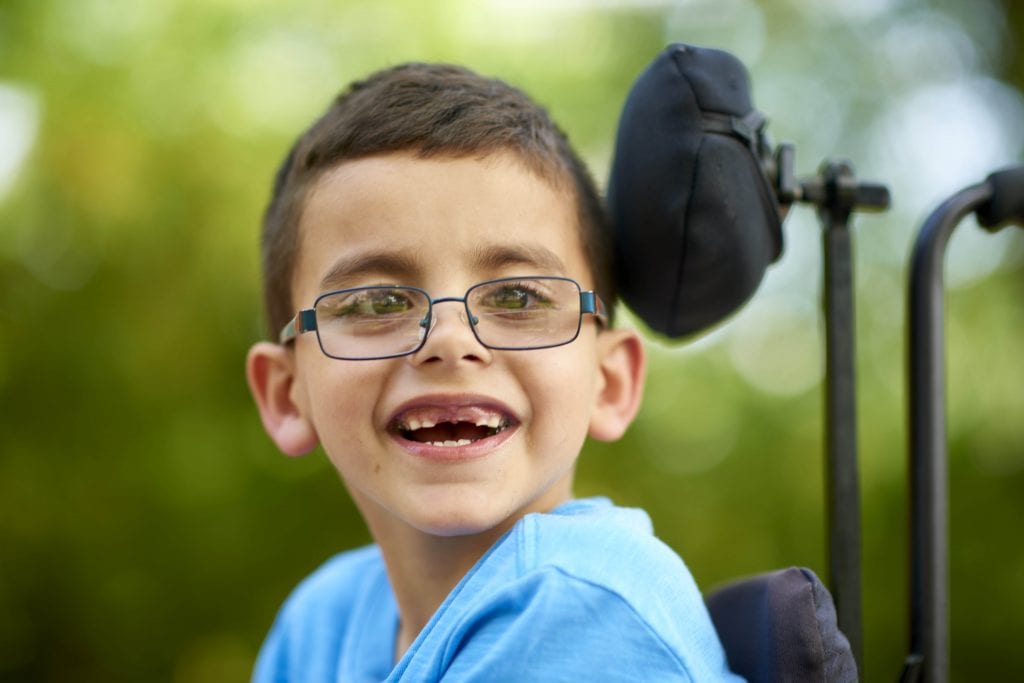
Gideon Treece, 10
Neonatal Abstinence Syndrome, Cerebral Palsy, Other Conditions
Born eight weeks early in Texas to a drug-addicted mother, Gideon weighed only three pounds. He also had one of the worst cases of neonatal abstinence syndrome (NAS) that his doctors had ever seen. His tiny body was in withdrawal from the drugs he was exposed to in the womb, leading to seizures, trouble feeding, severe pain and more.
His adoptive parents, Sara and Andy, had to wait for days before they could hold or comfort him. His doctors in Texas warned Sara and Andy that Gideon may never see, speak or walk. But his parents knew he was a fighter. When they brought him home to Ohio, they took him to Cincinnati Children’s for evaluation and treatment. There, he was diagnosed with cerebral palsy and other health issues.
In 2016, when he was just 6-years-old, Gideon showed his parents and his care team just what a fighter he was. Sara and Andy promised to take him to Disney World. And Gideon told them he’d walk onto the Peter Pan ride there. He worked hard at his physical therapy. It paid off. Using crutches, Gideon was able to walk onto the ride, just as he said he would.
Today, Gideon is 10 and thriving. He loves school, reading, writing and playing. His favorite summer activities are swimming and visiting Kings Island. A spunky and energetic kid, he enjoys all kinds of sports. He’s also obsessed with superheroes, which is fitting, because he is one!

Gunner Tippie, 3
Dwarfism
Gunner is truly one in a million. He was born with a rare form of dwarfism, a type so unique he is the only person known so far to have this specific genetic makeup. This diagnosis brings with it – total hip dysplasia, arthritis, mesocardia, mild hydrocephalus, chronic lung disease, kyphosis and scoliosis.
Gunner spent two months in the NICU gaining strength, developing his lungs, and eating – all while continuing testing. After time spent in the NICU, Gunner needed additional care at home. At 3 ½, he has overcome many challenges. He regularly sees pediatric specialists who monitor his progress. He has a custom-made walker, attends physical and occupational therapy and is beginning aquatic therapy. He attends school, loves to make new friends and thrives at being the center of attention with his silly jokes and bright personality.
Gunner is an inspiration to all, as he has come so far with a bright future ahead.

Hannah Carroll, 9
Right Middle Cerebral Artery (MCA) Stroke
Hannah was just one day old when her parents noticed twitching in her left leg. A team of medical professionals at Levine Children’s Hospital quickly investigated the cause of the tremors and determined that she had suffered a right middle cerebral artery stroke (MCA) and it was causing her to have seizures. Hannah spent a week in the NICU where she received the best medical care in the region. With the help of medication to control her seizures, she was able to go home at one week old.
Hannah received physical therapy, occupational therapy and speech therapy starting at only weeks old. Today, Hannah has re-gained most motor function on her left side and excels at her favorite sport, gymnastics.
Hannah has a vivid imagination and loves to write stories, having dreams of becoming a children’s storybook author. She loves her school MI express choir group and is always singing and humming wherever she goes! She loves traveling, the beach, being on swim team in the summer months and her favorite event in gymnastics is bars.
Hannah is one of the happiest kids you’ll ever meet, finding joy in all she does.

Hayden Stiff, 10
Intestinal failure; Short Gut Syndrome
In utero, Hayden was diagnosed with a Congenital Diaphragmatic Hernia, also known as CDH. CDH is a hole in the diaphragm that allows organs from the abdomen to move to the chest cavity restricting lung growth. Each CDH case is different. Hayden had a large CDH that involved his stomach, large and small intestines, and the left upper lobe of his liver. Hayden’s parents were told when he was born that he had less than a 5 percent chance of survival. He was intubated and rushed to the NICU. Once he was stable enough, he underwent a 12-hour surgery to put his organs in the right place and repair the hole in the diaphragm. A few months later, his parents were able to take their sweet boy home.
Since birth, Hayden has had multiple hospital admissions and has made more than 60 trips to the OR for different procedures/surgeries. He has spent many holidays and birthdays inpatient. Hayden currently only has part of a small bowel left. He recently had his large bowel removed. He is currently receiving IV nutrition (TPN) and IV fluids to keep him going each day. He receives these thru a port that is in his chest. He is also considered to have intestinal failure.
Hayden will be 11 on June 3, 2019. He has been thru more than most adults their entire life, but that never gets him down. He loves being a big brother to his two younger brothers and a baby sister. He is a very smart, caring, loving little boy with several very complicated medical problems that he does not let get in the way of being a kid.

Iris Helfner, 7
Ebstein’s Anomaly
Iris’s parents often joke that they knew right from the start that their daughter’s journey would be anything but ordinary. Just hours after Iris was born, she was making headlines — because she had arrived at exactly 11:11 a.m. on November 11, 2011.
Iris was diagnosed with Ebstein’s Anomaly, a rare congenital heart defect. The valve between her two right heart chambers was not in its proper position, and it had abnormal valve leaflets — flaps of tissue that open and close to allow for blood flow. Despite her diagnosis, Iris was acting like a normal, healthy newborn, so instead of performing surgery right away, doctors chose to keep a close eye on her heart. Every few months, she returned to the hospital for scans, and for years, she was able to avoid the operating room.
But the faulty valve in Iris’s heart began showing too much wear and tear after Iris reached kindergarten. In late 2016, doctors decided it was time for surgery. Iris received an open-heart operation to replace the valve in her heart and allow it to function normally but endured many set-backs and complications. She needed multiple transfusions and had to make a return trip to the operating room to control the bleeding. She developed unexplained fevers and underwent countless tests and treatments as doctors tried to keep an infection from taking hold.
Iris’s body rebounded after each setback, and after nearly two weeks on life support, Iris was able to come off ECMO, and her heart began beating by itself again. Her recovery was slow, and she had to fight past additional obstacles, including a stroke and one last trip to the OR — this time, for the placement of a pacemaker that will help regulate her heart rhythm for the rest of her life.
Seventy-two days after her surgery, Iris was finally able to leave the hospital. Now, just over a year after her hospital stay, Iris is a vivacious first-grader who seems to never stop smiling. The only sign of what she’s been through is a scar down the middle of her chest.

Isabella Dutton, 8
Trauma Patient – Dog Bite
August 25, 2018 was a memorable day for Annabella (Bella) Grace Dutton in more ways than one. As a budding young 7-year-old cheerleader, this date marked her first cheer game. To celebrate this milestone, the Dutton family went to their favorite campground near Custer, Michigan. After they arrived, Bella wandered off to play with some friends. She was over at their camper lot when it happened. The first thing Bella’s mom remembers is Bella running towards her yelling “I’m bleeding.” Her hands and face were covered in blood. Bella had been bitten by a dog.
When the Dutton’s arrived at Spectrum Health Ludington, there was a group of trauma nurses and doctors to check her out and help stabilize her condition. They provided fluids, bandaging, pain medication and an IV of antibiotic fluid to combat any potential infection from the animal bite. However, to fully treat and provide adequate care, the doctors said Bella needed to be transported to Helen DeVos Children’s Hospital. An ambulance rushed her and her mom the 96 miles to Grand Rapids, Michigan.
Once they arrived, they were greeted by child life specialists and trauma nurses to help Bella get prepped for her surgery. They advised the family on the potential complications Bella could be facing including the loss of her right eye. Over the course of the next three hours a team of anesthesiologists, trauma surgeons and plastic surgeons worked on Bella. She had many stitches and essentially a hole in her in forehead packed with special gauze, but her eye and vision were expected to be okay.
Eventually when Bella is older, she will need plastic surgery for the scars and rhinoplasty to help rebuild the bridge of her nose. And Bella continues to see a counselor to help her work through her fear of dogs. But Bella and family are thankful and realize things could have been much worse.

Kylie Rose Jacobs, 4
Wilms Tumor
When she’s not busy overcoming obstacles, Kylie loves reading, writing in her journal, writing stories, playing school with her brother and sister, dancing (ballet) at the University of Akron, sewing Kylie’s Bags of Love with her friends, and watching movies with her family. Kylie has the ability to make up a song or a poem that has meaning within minutes. She has also designed her own signature shoe, which was purchased by over 400 people!
Kylie was diagnosed with a stage III Wilms tumor in January 2015 at the age of five. She was having a difficult time sleeping, claiming her legs were uncomfortable, and was having on and off stomach pains and constipation. Doctors were not concerned. Finally, her next-door neighbor, who is a family physician, came over and felt her abdomen. She immediately felt something and ordered a CT for the next day, which showed a cantaloupe sized tumor coming off her kidney.
Kylie was admitted immediately and stayed in the hospital for 34 days. In that time, she ended up in the PICU, had two drains placed to help eliminate fluid and started chemo. She had chemo for seven months, radiation to her entire abdomen, and had her tumor, kidney and adrenal gland removed. She was declared free of cancer in August of 2015. Six months later, February 16, 2016, a tumor was found in her liver. Her treatment plans this time included more intense chemotherapy and another surgery to remove the tumor. Again, she was declared free of cancer in August 2016, but three months later, they found that the tumor recurred again in her liver.
She spent a great deal of time in the hospital during these months, as the chemo plan included at least a five day stay every time. She handled this all with such grace and bravery – impressing everyone. She received more rounds of chemo and a month of proton radiation. At the end of April 2017, she was admitted to Akron Children’s Hospital for 35 days for a stem cell transplant.
Once she came home, she had to finish 100 days of isolation and a restricted diet. On July 26, 2017, her scans showed no evidence of disease and she was able to have her port surgically removed on July 27. She was also able to start 3rd grade on the first day of school with all her classmates, the first time since Kindergarten. She has been cancer free longer than she ever has before, 15 months.
Kylie continues to be an inspiration to all who know her. Besides raising over $73,000 for Akron Children’s at Kylie Rose’s Run, she continues to sew and stuff Kylie Bags of Love for children in the hospital, and she inspired the inception Project Outrun – an organization that puts custom Nike shoes on children fighting cancer.

Alexia (Lexi) Zaffarano, 14
Type 1 Diabetes
Lexi was diagnosed with Type 1 Diabetes a few years ago, two weeks before her 12th birthday. She wasn’t feeling great, was really thirsty and had to go to the bathroom constantly. She lost 20 pounds in one month.
When she was diagnosed, she stayed at Royal Oak Beaumont for three days. They made sure she was comfortable with her diagnosis and taught her and her family everything they needed to know about Type 1 Diabetes. During that time, they learned about the differences between the different types of diabetes. They learned how to check sugar, fill syringes, dose for corrections, count carbohydrates, dose for carbs eaten, different types of insulin.
Lexi and her family are so thankful for the team at Beaumont, who taught them everything they needed to know. They helped them be comfortable with this change that effects the rest of Lexi’s life. They relayed the information, so she could understand it as an 11-year-old. Knowing that it was scary, they had Mya the therapy dog visit and cuddle with her in her bed. Child Life Specialists came in and did crafts with her also. They made one of the scariest times of her life seem not so bad.
There are so many services for children because of the funding from corporate sponsors of Children’s Miracle Network Hospitals and Lexi is so thankful for them.

Lilah & Laney Monicken, 5
Twin-to-Twin Transfusion Syndrome (TTTS) & Cerebral Palsy
Lilah and Laney are feisty, happy twin sisters who were born with Twin-to-Twin Transfusion Syndrome, or TTTS. They also share a diagnosis of Cerebral Palsy, but that is just one aspect of their lives. Because of their condition, Lilah and Laney were born early at just 28 weeks. At the time of their birth, Lilah weighed 3.1 pounds and Laney weighed just over 1 pound. They would spend the next 75 days in the neonatal intensive care unit.
“I work in health care, so there’s a part of you that thinks you understand what having a medically complex child would entail,” Emily, the twins’ mother recalls. “But there’s just no preparation or level of knowledge that can show you all that goes into it. It was completely overwhelming at the beginning, and there’s so much uncertainty because you don’t know how your children are going to develop as they get older. “
Lilah and Laney both experienced physical delays throughout their infancy. They began treatment at Gillette Children’s Specialty Healthcare and they’ve been receiving treatment there ever since. “I really don’t know where we’d be if it wasn’t for Gillette,” Emily says. “To have a hospital that is completely focused on treating children who have disabilities in our backyard has been such a blessing. It’s allowed us to get to where we are today.”
Laney and Lilah, now 5 years old, are currently thriving in junior kindergarten. They’re mainstreamed with their peers, participate enthusiastically in dance classes and have their whole lives ahead of them. Sure, they face challenges, but in this—and all things—they face those challenges together.

Lilly Isbell, 12
Asthma, Type 2 Brain Bleed, Mitral Valve Insufficiency, Mild CP
When Tom Isbell arrived at Penn State Health Milton S. Hershey Medical Center that July morning in 2006, it was supposed to be a regular day at work as a pathology technician. Then he got a phone call from the chaplain. His wife Wendy and unborn baby had been hit by another vehicle and was in a terrible accident. To save their lives, Wendy needed to deliver early. Lilly was born at just 29 weeks. “She barely fit in the palm of both of my hands. She weighed 2 pounds 14 ounces and was born blue,” Tom recalled. The path to recovery for Lilly and Wendy would be a long one. Lilly was born with a heart condition and a brain hemorrhage. She needed open heart surgery, physical therapy and faced other developmental issues as she grew.
In 2017, Lilly attended the I Can Shine bike camp, which helps kids with challenges learn how to ride a two-wheel bicycle. She loved it! In addition to funding the equipment Lilly needed during her hospitalization, CMN Hospitals funding supports medical camps like I Can Shine. These camps help kids build confidence and self-esteem. Kids also love meeting new friends who share similar medical journeys. Most of all, it’s a chance for kids to experience childhood! Thank you for giving kids like Lilly the #GiftofGrowingUp!

Luke Bemus, 15
Cystic Fibrosis, Portal Hypertension Liver Disease, Celiac Disease
Luke doesn’t have to wake up in the morning and tell himself to be positive. He just…is. And that’s pretty amazing, considering what Luke has to deal with every day of his life.
Luke has cystic fibrosis (CF), a rare, genetic condition that causes mucus buildup in the lungs, pancreas and other organs. The thick, sticky mucus clogs Luke’s airways and makes breathing difficult, and it prevents his body from creating enzymes needed to digest food. So, at least three times a day, Luke takes 45 minutes to do a breathing treatment and wear a “percussion vest” that shakes the mucus loose. Then there are the pills—more than 50 a day to help his body digest food and prevent the infections that are so common among CF patients.
But even when 15-year-old Luke and his parents manage all of his care perfectly, he still battles symptoms like fatigue, nausea, constipation and pain. Breathing can be a struggle, too, especially in the fall when mold counts are high. In the last seven years, he has been hospitalized 35 times for infections, digestive issues, blood transfusions and surgeries.
Luke refuses to let any of that hold him back. Last year, he earned straight A’s and was student council president, despite missing 85 days of school. He plays bass guitar in his church youth group’s band, and viola in the school orchestra. He loves golf and being an uncle to his two nieces and three nephews, and can’t wait to begin his freshman year at Sidney High School in the fall.

Marina Marasco, 12
Giant Omphalocele
Marina was born with a giant omphalocele (pronounced uhm-fa-lo-seal), which means the abdominal wall doesn’t close, and for Marina, the bowel, liver, stomach, spleen and small intestines protruded out of the abdominal cavity covered by a thin membrane. She was not breathing when she arrived six weeks early. She was less than one hour old for her first surgery. Now, 12 years old, she finally has an abdominal wall but still no belly button.
Marina spent the first 10 months of her life in the Johns Hopkins All Children’s Hospital neonatal intensive care unit (NICU) as surgeons began the long, careful process of putting her back together again, moving and placing her organs and closing the opening that allowed them to dislocate in the first place. It is an ongoing process that requires surgical adjustments as she grows.
By her sixth birthday, Marina had achieved a red belt in karate. She made the cheerleading squad and honor roll. She has survived 21 surgeries — several of which nearly cost this tough little fighter her life.

Max Krempasky, 12
ATV Accident
Few people survive the kind of spinal injuries that Max Krempasky suffered in November 2015. Those who do, typically don’t walk again. And they certainly don’t go rock climbing and play baseball. But that’s exactly what Max is doing today.
Max, now 12, was riding an all-terrain vehicle (ATV) with a friend when he got distracted and accidentally crashed into a tree. The impact tipped over the 1,200-pound vehicle, which landed on top of him, fracturing his jaw and fracturing and dislocating two vertebrae in his spine. Within minutes Max’s mom, Michelle, and sister, Taylor, rushed to Max’s side. With the help of Max’s friends, they lifted the ATV off of Max, who wasn’t breathing.
Paramedics arrived and a CareFlight crew rushed him from the Krempasky’s South Vienna, Ohio, home to Dayton Children’s. There, multiple surgeons and specialists took over his care. Max’s most serious injury was to his neck. He had suffered an atlanto-occipital dissociation — in layman’s terms, an internal decapitation. This meant that the ligaments in his neck that attach the skull to the spine were severed. “It is a miracle that Max survived,” says Patricia Abboud, MD, one of Max’s pediatric intensivists. “Patients who suffer this type of injury usually die or suffer significant, long-term neurological consequences, similar to the type of injury Christopher Reeves suffered after his tragic horseback riding accident.”
Max spent most of his hospital stay in the pediatric intensive care unit, where caring physicians, nurses and therapists helped him regain skills such as sitting up and walking. Despite his extensive injuries, Max was able to go home five weeks after the accident, just two days before Christmas 2015.
Today, the only signs of his injuries are a slight speech impediment and stiffness in his neck. Contact sports, such as football, are “out” for Max, but in Spring 2017, he was cleared to play baseball. “I feel like I’m almost back to normal, but when I stop to think about what happened I realize how lucky I was,” Max says.
Mekinley Elrod, 15
Panhypopituitarism (no pituitary gland) & Adrenal Insufficiency
At just 14 years old, Mekinley Elrod has already traveled down a long medical road. Her journey began when she was three days old. Diagnosed with panhypopituitarism (no pituitary gland) and adrenal insufficiency, she spent 2½ months at Norton Children’s Hospital, where she endured numerous surgeries, including heart surgery to repair a valve. She still spends a lot of time at the hospital because common illnesses and viruses can be a major threat requiring a stay in the hospital.
Despite Kinley’s difficult journey, she has an amazing spirit and a heart of gold. She wanted to give back to other kids at Norton Children’s and help them feel loved and supported, so she created “Kinley’s Helping Hands,” a fundraiser for Norton Children’s. Kinley has hosted carnivals, toy drives and many other fundraising events to help kids at Norton Children’s Hospital. She also has been involved with the hospital’s annual Radiothon for the several years. She tells her story and reads her poems about her experience with Norton Children’s Hospital.
With the help of Kinley’s mother, Danielle, her father, Jeremy, and her many friends and family members, Kinley has raised more than $65,000 for patients’ families in need of financial assistance.

Noah Kelly, 7
Burn Patient
Six-year-old Noah Kelly finished bible study at his Nashville church and asked to play soccer outside with his friends before heading home. The electricity had been out at the church on that Saturday in July 2016, and the group had hoped that the electric company would arrive to fix the problem before the steamy day ended. As Noah’s mom, Rufta Aron, said goodbye to friends, Noah reached inside a bush to retrieve the soccer ball and touched a live electrical wire. One second. One touch. Lives forever changed.
Noah received life-threatening electrical burns over much of his body. His friends all started screaming, “fire, fire,” but there was no fire. Rufta says, “Noah was lying on a little hill. When I got to him, I lost it. His eyes were open, but he was like stone.” Noah’s mom began CPR, during which she pulled melted wire out of his mouth. “I tried to dump water on him. I wasn’t thinking right. I wasn’t even thinking that I shouldn’t touch him (because of the electricity). My reaction was to bring him back.” Noah’s mom, her friend, and another church member took turns performing CPR, and finally got a faint pulse. The paramedics arrived quickly and tried to stabilize Noah before transporting him to Monroe Carell Jr. Children’s Hospital at Vanderbilt.
The Pediatric Emergency Department team quickly determined that Noah was burned over 40% of his body, particularly his right arm and hand, the back of his head and the entire back of his body. Noah’s burns were severe enough to require amputation of his right arm while he was in the PICU. After one month in the PICU, he was transferred to the Burn stepdown unit where he stayed for more than three months. Noah’s total hospital stay was 145 days – just shy of five months. Noah required about 15 skin grafts.
Dr. Lisa Rae, director of Burn Center Quality and Performance, Trauma and Surgical Critical Care, says that, “Noah’s family is one of the most incredible families I’ve ever dealt with. How they coped and stayed positive, how they were there in ways appropriate for Noah, was really remarkable.”

Paige Alston, 5
Giant Omphalocele, Atrial Septum Defect
Paige was born with an omphalocele, an abdominal wall defect which caused Paige’s stomach, intestines and a portion of her liver to develop in a sac outside of her body. She was also diagnosed with an atrial septum defect shortly after birth. The defect left Paige without a wall in the upper portion of her heart separating the right and left sides, resulting in pulmonary hypertension and a heart condition known as an ASD.
At just 3-months old, Paige underwent open-heart surgery and a tracheostomy to help her breathe. She spent the first 180 days of her life at Hasbro Children’s Hospital, much of it in the pediatric intensive care unit, before returning home with the assistance of a ventilator to begin her journey to recovery.
To date, Paige has undergone 23 procedures. She no longer needs a ventilator and has a fully healthy heart, showing no remaining signs of pulmonary hypertension. Now in preschool, Paige is speaking, running around, and brightens the lives of everyone around her with her infectious smile and sense of resiliency.
As the 2018 Children’s Miracle Network Hospitals’ Rhode Island Champion, Paige will spend the year as our pediatric ambassador, highlighting the work of Hasbro Children’s Hospital and the importance of philanthropy to the care and treatment happening here.

Patrick & William Jacobson, 10
Patrick: Prematurity & Cerebral Palsy; William: Prematurity
Patrick and William were born when their mother was only 26 weeks pregnant. Patrick, born weighing 1.13 pounds, and William, born weighing 1.14 pounds, are surviving triplets, and say they received their fighting spirit from their brother who didn’t make it.
Both Patrick and William underwent cardiac surgery before they were 12 days old. While fighting numerous infections and overcoming several setbacks, the boys spent nearly four months in the Alexander Center for Neonatology at Orlando Health Winnie Palmer Hospital for Women & Babies. During their stay in the Neonatal Intensive Care Unit (NICU), they were in special incubators called giraffe beds, which were purchased with funds from Children’s Miracle Network Hospitals.
As early as their time in the NICU, the boys underwent physical, occupational and speech therapy to make sure they hit milestones, but overtime Patrick struggled to eat and gain weight. He was diagnosed with Failure to Thrive at six months old and at 18 months old, Patrick was diagnosed with Periventricular Leukomalacia and Cerebral Palsy. Patrick has had many more procedures and medical complications in his life, but despite the frequent hospitalizations, procedures and weekly therapy treatments that he receives, nothing stops him and his brother from being bright, inquisitive 10 year olds. William, despite his reduced lung capacity with Chronic Lung Disease, plays competitive soccer, and Patrick has recently relearned to walk and is walking better than ever before!

Richie Montgomery, 7
RYR-1 Congenital Fiber-Type Disproportion Myopathy
Richie is a funny, happy kid who loves race cars, his iPad and his friends and family. He was born with congenital fiber-type disproportion myopathy as a result of an RYR1 gene mutation, a rare and complex condition that affects his muscle function. Because of his significant health care needs, he has received treatment at UH Rainbow Babies & Children’s Hospital since his family moved to the Cleveland area when he was 3.
Treated in the NICU immediately after he was born, Richie then spent two months in the pediatric ICU. His long medical journey has included a tracheostomy and ventilator, a feeding tube and many surgeries. He currently sees 13 pediatric specialists and occasionally requires hospital stays. Despite his complex condition, Richie is stable and healthy today.
Richie is an expert power wheelchair driver and is even the star of a book, “Power Wheelchair Safety for Kids.” His adventures also include adaptive baseball, Cub Scouts, wheelchair basketball, adaptive horseback riding and even adaptive kayaking.
Richie’s family is devoted to ensuring he can experience the fullest life possible. Richie aspires to be an astrophysicist when he grows up, and his parents are working to make sure none of his goals are beyond his reach.

Tymiere Grayson, 14
Sickle Cell Disease
Tymiere was diagnosed with sickle cell disease when he was just two months old. A few months later, he began showing symptoms of the disease and was admitted to the hospital frequently. In a nine-month period, he was hospitalized 17 times.
A friend of his mother told her about Children’s Hospital of The King’s Daughters in Norfolk, Virginia, describing it as a hospital dedicated to the exclusive care of children. Genene, a single mother, decided to move to Norfolk so Tymiere could receive treatment at CHKD. Tymiere was almost a year old by then, and just a few weeks after their arrival in Norfolk, he became so sick that he was hospitalized at CHKD because of intestinal spasms. Since his recovery from that experience, CHKD has been like a second family to him.
He continued to have episodes of severe pain because of his sickle cell disease, and returned to the hospital every few weeks. When he was three years old, he started receiving blood transfusions to help reduce his pain. But complications of the disease have brought new health issues. Due to his sickle cell disease, Tymiere developed avascular necrosis in his hips, which means his bone tissue has deteriorated due to loss of blood to the bone. His kidneys and lungs have also shown signs of wear due to complications of the disease.
Even though Tymiere has experienced a lot of pain in his life, he is always looking to see if he can help other patients battling with chronic illnesses or recovering from traumatic injuries.

Ziler Hawkins, 7
Hydrocephalus
Ziler was born at 37 weeks gestation. She was a seemingly healthy baby, and there were no complications during delivery. When she was four months old, her parents noticed she was not using the right side of her body, specifically her right hand. They discussed their concerns with their pediatrician, who felt she would begin using it. Unfortunately, at six months, she had not made progress with her hand, and her head was measuring larger from her previous measurements. She was referred for a CT scan, which revealed a cyst filling half of her brain.
Ziler was immediately sent to her local emergency department, which transferred her via ambulance to WVU Medicine Children’s to see a pediatric neurosurgeon. An MRI determined she had hydrocephalus. She underwent her first brain surgery, an endoscopic third ventriculostomy and a second surgery.
Two years later, she received a ventriculoperitoneal shunt to relieve pressure on her brain. In 2015, at four years old, Ziler spent five months at the hospital for an infection and underwent nine more brain surgeries to treat her hydrocephalus and infections. While there, doctors discovered that she also had osteomyelitis in her right foot. This infection of the bone, along with other infections, caused her to be bedfast, causing her to lose a lot of strength and mobility. She put in a lot of work to get back to walking. To date, Ziler has had 15 brain surgeries.
Ziler is an inquisitive child. She loves finding out the meaning of new words and using them in daily conversation. Her favorite thing to do is crafts, and everyone knows her at the local stores. She enjoys reading and learning about the characters. She is also very caring, always encouraging others, telling them, “You can do it; I know you can!”

